HEALTHCARE ASIA AWARDS 2023 RECOGNISES TOP INDUSTRY PLAYERS
COULD NFTS BE THE KEY TO MANAGING RISING HEALTHCARE DATA?
WHY GBA MIGHT NOT BE IDEAL FOR SOME OF HK’S GRANDMAS AND GRANDPAS
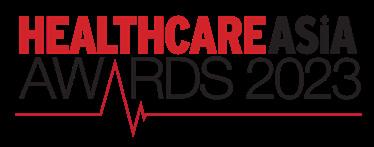



MCKINSEY CALLS FOR ‘DISABILITY MARKERS’ IN E-RECORDS
VIETNAM HOSPITALS FREE FROM TEDIOUS PROCUREMENT BIDDING
The magazine for healthcare administrators and policy makers Display to 30 June 2024 |
www.healthcareasiamagazine.com
ISSUE NO. 20 Healthcare Asia

Scan to connect with us



PUBLISHER & EDITOR-IN-CHIEF Tim Charlton
EDITORIAL MANAGER Tessa Distor
PRINT PRODUCTION EDITOR Eleennae Ayson
LEAD JOURNALIST Consuelo Marquez
PRODUCTION TEAM Aulia Putri Pandamsari
GRAPHIC ARTIST Emilia Claudio
COMMERCIAL TEAM Janine Ballesteros Jenelle Samantila Cristina Mae Posadas
ADVERTISING Shairah Lambat shairah@charltonmediamail.com +65 3105 1200 ext. 402
AWARDS Julie Anne Nuñez awards@charltonmediamail.com
ADMINISTRATION Eucel Balala accounts@charltonmediamail.com
EDITORIAL ha@charltonmediamail.com
SINGAPORE
101 Cecil St., #17-09 Tong Eng Building, Singapore 069533 +65 3158 1386
HONG KONG
Room 1006, 10th Floor, 299 QRC, 287-299 Queen’s Road Central, Sheung Wan, Hong Kong +852 3972 7166
MIDDLE EAST
FDRK4467,Compass Building,Al Shohada Road, AL Hamra Industrial Zone-FZ,Ras Al Khaimah, United Arab Emirates
www.charltonmedia.com
PRINTING
Times Printers Private Limited 18 Tuas Avenue 5, Singapore 639342 www.timesprinters.com a member of Times Publishing Limited
Can we help?
Editorial Enquiries: If you have a story idea or press release, please email our news editor at ha@charltonmedia.com. To send a personal message to the editor, include the word “Tim” in the subject line.
Media Partnerships: Please email ha@charltonmedia.com with “Partnership” in the subject line.
Subscriptions: Please email subscriptions@charltonmedia.com.
Healthcare Asia is published by Charlton Media Group. All editorial materials are covered by copyright and may not be reproduced without consent. Contributions are invited, but copies of all work should be kept as Healthcare Asia can accept no responsibility for loss. We will, however, take the gains.
Distributed to all CxO, board levels, doctors, and healthcare professionals of major private/public hospitals and health ministries in ASEAN and Hong Kong.
FROM THE EDITOR

Tech, like blockchain and AI-driven diagnostics, is becoming central to operational efficiency and patient care in the healthcare field today. One development is the potential use of non-fungible tokens (NFTs) for storing comprehensive medical histories. Learn more about this innovation on page 6.
Adding to these advancements, experts from McKinsey Health Institute and the Missing Billion Initiative highlight the importance of including "disability markers" in patient data. This could significantly enhance the life expectancy of individuals with disabilities. Read on page 22.
Efficiency is also a key focus at Premier Jatinegara Hospital, where CEO Dr. Susan Ananda has introduced a new self-check-in kiosk, aimed at reducing patient waiting times. Read more on page 16.
Meanwhile, Vietnam expands its access to hospital equipment and medicines as new regulations quicken bidding times for procurement which can be seen on page 26.
At the Medical Fair Taiwan 2023, innovators showcased digital health products centered on people-centric healthcare. Check out the event coverage on page 28.
The Healthcare Asia Awards 2023 has recognised the top industry providers leading these transformative changes. Their innovative ideas and hard work have refreshed the field as the world fully recovers from the COVID-19 pandemic. See the full list of winners on page 32.
Best of health to you all!
 Tim Charlton
Tim Charlton
HealthcareAsia is the media sponsor for the following events:



HEALTHCARE ASIA 1

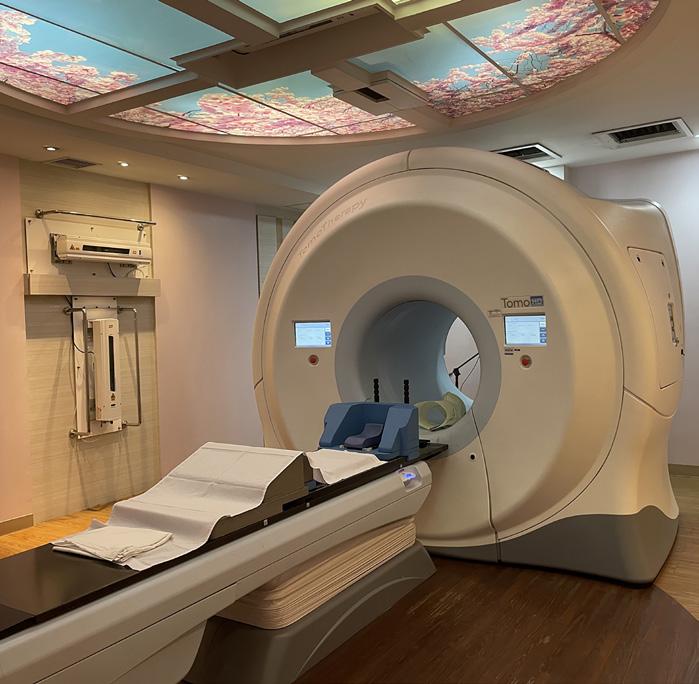


2 HEALTHCARE ASIA Published bi-annually by Charlton Media Group 101 Cecil St. #17-09 Tong Eng Building Singapore 069533 For the online versions of the healthcare stories, visit the website healthcareasiamagazine.com CONTENTS FIRST EVENT NEWS HEALTHCARE TECH INTERVIEW COUNTRY REPORT 32 AWARDS COVERAGE HEALTHCARE ASIA AWARDS 2023 RECOGNISES TOP INDUSTRY PLAYERS COMMENTARY CEO INTERVIEW DIGITAL KIOSK SPEEDS UP HOSPITAL QUEUES 16 VENDOR VIEW 14 HOSPITAL TOUR MAKATIMED'S OSS RELIEVES ER AND SURGERY CONGESTION 04 HIMSS provides guidance for digital healthcare in APAC 06 Could NFTs be the key to managing rising healthcare data? 08 How will AI adoption in data governance affect Asia Pacific healthcare? 10 Tan Tock Seng Hospital pioneers advanced virtual reality programme for staff training 12 Hopebotics' robotic hand aid offers new hope for stroke patients 18 New unit boosts pediatric heart care in Indonesia 20 From bricks to clicks: APAC shifts to virtual hospitals 22 McKinsey calls for 'disability markers' in e-records 24 Why GBA might not be ideal for some of HK’s grandmas and grandpas 26 Vietnam hospitals free from tedious procurement bidding 28 Taiwan healthcare innovators aim to provide people-centric healthcare 30 Investing in future of healthcare must consider 4 key needs 62 Harnessing the potential of cell and gene therapies in Asia Pacific 64 Democratising healthcare in SEA: From traditional hospitals to digital healthcare providers


HIMSS provides guidance for digital healthcare in Asia Pacific
by Aulia Pandamsari
Stepping out of the COVID-19 pandemic, the healthcare industry finds itself wrapped in a world of healthcare technology tools and innovations. Through these advancements, the non-profit global organisation, Healthcare Information and Management Systems Society (HIMSS), is on a mission to measure the technological progress of healthcare providers for the general welfare of the industry.
It’s not enough to be fascinated by rapid technological progress that now allows remote services for patients or faster, more accurate and comprehensive digital testing devices. What HIMSS brings to the table are “maturity models,” which serve as detailed measurement tools in order to harness the power of technology for the continuous improvement of healthcare on a global scale.
“We created maturity models that examine various aspects of digital healthcare technology, from electronic health records to digital imaging to analytics maturity to infrastructure,” Simon Lin, managing director for Asia-Pacific & vice president of HIMSS, told Healthcare Asia in an interview on the sidelines of the recent HIMSS23 APAC event in Jakarta.
Building APAC networks
These evidence-based maturity models are built using the organization’s extensive work with healthcare providers around the world, and are used as reference points for models used in each country to be continually updated and remain relevant as technology advances. For instance, HIMSS works directly with hospitals in the Asia-Pacific region to support their digital transformation.
HIMSS brings together healthcare professionals, technology experts, vendors, and government institutions to promote and advance digital healthcare technology, said Lin. What makes HIMSS special is its dedication to realising the full potential of human health, no matter where you are in the world.
“We have worked with governments at the national level to assess their digital maturity and identify gaps so they can continue to invest effectively," he said.
"In developing countries like Indonesia and Malaysia, the focus is on supporting them in realising the value of digital health: how to use electronic medical records
(EMRs) effectively and how to plan and execute investments,” Lin added.
Globally, HIMSS collaborates with over 68,000 healthcare organisations and has assisted in improving healthcare for up to 800 million patients.
Varying levels of digital maturity
HIMSS has categorised Asia-Pacific countries based on their levels of digital maturity. Doing so allows the organisations to help countries and their healthcare institutions stay abreast of technology trends with their level of digital maturity in mind, explained Lin.
At the basic level are countries with foundational levels of technology adoption and maturity — where adoption refers to the ownership of technology; and maturity refers to the level of usage.
Lin noted that having technology is different from using technology effectively to achieve goals. “For example, people might think that electronic medical records simply means scanning paper records and uploading them to computers, but it is critical to digitalize all medical records so that the data can be used for analysis and optimizing outcomes,” he said.
The second group comprises countries in the Asia-Pacific region that have made some investments and achieved a certain level of maturity, but lack sufficient resources to progress further. Many countries fall into this second group, with adequate investment and maturity levels, but significant gaps remain for further development.
“We can see that [these ‘middle-tier’ countries] are now in the phase of enhancing their infrastructure and technology. They are modernising EMRs and transitioning from old technology,” said Lin.
The third group consists of countries with highly mature digital healthcare systems. These countries typically have a highly developed digital healthcare system, strong government support and investment, and a reliable workforce to support the transformation and adoption of technology in its healthcare sector. Lin said that the rapid adoption and maturity of technology in the healthcare field is not surprising.
“From 2000 to 2020, we were in the era of digital healthcare services, where people in the industry realised the need for EMRs and technology. Indonesia, for instance, is currently in that phase. But for many other countries, like Taiwan, Australia, and even Singapore, they have recognised the need for technology investment but are facing challenges in their implementation,” he said.
Maturity models serve as detailed measurement tools to harness the power of technology for continuous improvement of healthcare on a global scale.
4 HEALTHCARE ASIA FIRST
Simon Lin, managing director for Asia-Pacific & vice president of HIMSS
APAC

“ Treatment for your health, respect for your life. Medical Korea will be a new beginning of your life exhausted by severe illnesses.
Your days will begin again with us ”

https://www.medicalkorea.or.kr/
https://www.youtube.com/MedicalKoreaOfficial
https://www.instagram.com/medicalkoreaofficial/
HEALTHCARE ASIA 5
Medical Korea, Where your days begin again

Could NFTs be the key to managing rising healthcare data?
The healthcare industry may soon tap into the world of non-fungible tokens (NFTs)— known more for their buzz in the art and collectible markets—to securely manage patient data. Singaporean healthcare professionals Dr. Teo Zhen Ling and Associate Professor Daniel Shu Wei Ting are advocating for a system where patients hold the key to their medical histories, encapsulated in unalterable digital tokens. Currently, patient data is being secured and shared when needed by institutions such as healthcare providers and insurance firms. Using NFTs to manage health data will allow patients to own and share their data, similar to how digital assets are being traded in the form of NFTs in
Tcommercial markets, said Zhen, an ophthalmology resident at Singapore National Eye Centre (SNEC).
“This empowers patients to take greater ownership of their health, which has been shown to produce better healthcare outcomes in the long run,” Zhen told Healthcare Asia.
NFT as a safe space for patient data
Since the blockchain is traceable and unalterable, patient data stored as NFT can ensure that there is complete transparency and accuracy of research data.
“This leads to greater data integrity and better research outcomes, which could potentially produce novel healthcare solutions to streamline workflows or improve clinical
he spotlight shines on APAC healthcare real estate as investors are drawn to life sciences and senior housing categories. Research and development (R&D) assets, mostly of life sciences real estate, emerged as APAC’s top alternative asset class last year with total investments of US$4.3b, up 61% from the year prior. The next is a 43% jump in the senior housing market after US$2.6b worth of aged care homes changed hands last year, according to MSCI Real Capital Analytics data. Andrew Haskins, head of the strategy and investor advisory for APAC real estate at Schroders, said the two healthcare-related sectors surpassed the data centre sector –previously the top pick among investors for non-traditional asset class – and even defied the broad investment drop last year when APAC’s overall alternative real estate deals fell 16%.
[Patient data NFTs] lead to greater data integrity and better research outcomes, which could potentially produce novel healthcare solutions
outcomes, saving healthcare costs in the long run,” Zhen said.
NFTs are created via the minting of existing digital data, or through generative data, where the digital product is produced in whole or in part by an autonomous system.
Once encoded with blockchain technology, an NFT cannot be modified, and its authenticity is validated through the blockchain in which it is stored.
Before minting, the data must be cleaned, verified by credentials, and converted into an actionable form. This procedure allows individuals to own and trade digital assets between parties such as global medical networks, pharmaceutical companies, or insurance companies.
Lower healthcare costs
By storing patient data, healthcare providers will benefit by reducing costs for repeated medical tests on patients, Zhen said.
She cited as an example a diabetes patient who may undertake an HbA1c test — one that measures a person’s average blood sugar levels over the past three months — at a consultation with a general practitioner. The simple blood test is used to diagnose Type 2 diabetes.
During a subsequent visit to an endocrinologist, that patient can easily share the HbA1c test result with the attending physician, instead of spending on repeating the test since that data is now accessible.
Despite being a niche market, Haskins expects healthcare-related properties will continue to gain traction in select markets over the near term as more investors turn to non-traditional asset types.
The growing demand for life sciences assets was mainly driven by long-term trends like the ageing population and advances in biotechnology. The properties in this segment, such as mixed-use laboratories, office buildings, and light manufacturing facilities, are usually concentrated in well-defined clusters in specific cities.
Senior housing offering high-quality living solutions, medical care and amenities to retirees is also becoming a trend in certain markets especially in Hong Kong where there is a lack of aged care options, as well as Japan given its rapidly ageing population.
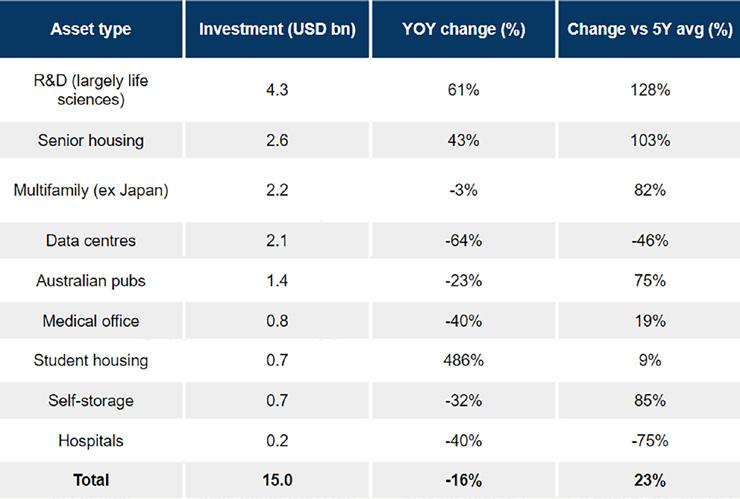
6 HEALTHCARE ASIA FIRST
HEALTHCARE REAL ESTATE WINS APAC INVESTOR INTEREST SINGAPORE
Photo by Artem Podrez from Pexels
APAC real estate — investment volumes in alternative asset types (2022).
Source: MSCI Real Capital Analytics
SCAN FOR FULL STORY
by Consuelo Marquez
by Consuelo Marquez

How will AI adoption in data governance affect Asia Pacific healthcare?
 Eric Dulaurans
Growth Digital LeaderIntercontinental, GE HealthCare
Eric Dulaurans
Growth Digital LeaderIntercontinental, GE HealthCare
Instituting a well-defined Data Governance Framework (DGF) is particularly important in healthcare, given the sensitive nature of patient information and the complexity of healthcare data management. This framework will also prioritise ethical and explainable use of AI for predictive and preventive care.
A robust DGF can help healthcare organisations manage data more effectively, reduce the risk of data breaches, improve data quality, and enhance the overall quality of care. It can also help organisations comply with evolving regulatory requirements.
DGFs ensure that there are guidelines for all facets of data governance, such as the collecting, storing and processing of sensitive data, the roles and responsibilities of data stewards, and policies and procedures for protecting healthcare data from unauthorised access, use, or disclosure, amongst others.
Whilst this region is no stranger to governance regarding data privacy and security, it is also one that is culturally very rich and diverse in both the dynamics of its healthcare systems and their respective regulatory requirements. This richness and diversity can significantly impact the collection, management, and use of healthcare data.
When building data governance frameworks in healthcare in the region, healthcare providers must consider specific cultural considerations associated with healthcare data, such as patient privacy, confidentiality, and cultural attitudes towards data sharing.
Therefore, when developing software that harnesses the use of sensitive data, such as the use of AI and predictive care in precision healthcare or virtual health assistants, active steps must be taken to enhancing data security, thereby reducing vulnerabilities to data breaches, and enabling better data sharing to ensure more efficient collaboration on patient care.
GE Healthcare creates a set of ethics around how it will and will not use AI in healthcare. These ethical considerations focus on four issues: ensuring the safety and privacy of patients, being a trusted steward of data, creating transparency, and guarding against bias.
With careful planning, stakeholder engagement and proper change management, such initiatives can be put in place without incurring challenges such as added layers of organisational complexity, bureaucracy and even data silos.
To accelerate healthcare transformation, software developers can lead the charge and guide healthcare providers to not only define what to do, but also guide how to implement a tailored DGF for their customers’ needs, over time, and with measurable and tangible positive outcomes. By prioritising data integration, data security, and analytics, software developers can help healthcare organisations improve patient care and outcomes whilst ensuring compliance with in-market regulations.
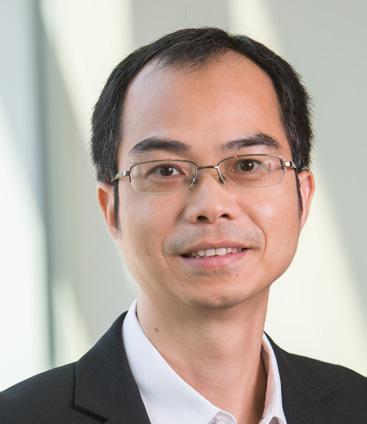
Professor James Pang
Associate Professor of the Department of Analytics & Operations, NUS Business School
When building data governance frameworks in healthcare organisations in the Asia Pacific (APAC) region amidst the rise of AI and predictive care, several key factors need to be considered.
Data Privacy and Security: Implement robust measures such as encryption, access controls, and audit trails to safeguard patient data. Develop comprehensive policies and procedures to protect sensitive health information, mitigate unauthorised access, prevent data breaches, and counter cyber threats.
Regulatory Compliance: Understand and comply with local and regional regulations governing data privacy, security, and healthcare practices. The regulations include the Personal Data Protection Act (PDPA), the General Data Protection Regulation (GDPR), the Health Insurance Portability and Accountability Act (HIPAA), and other relevant regulations specific to each country.
Data Quality and Integrity: Establish data quality standards to ensure accurate and reliable data for analysis. Implement data validation and verification processes, data cleansing techniques, and data integration protocols to maintain data integrity and prevent bias in AI algorithms.
Consent Management: Develop clear policies and procedures for obtaining informed consent from patients for data collection, storage, and analysis. Ensure transparency in explaining how patient data will be used and shared, particularly in the context of AI and predictive care.
Ethical Considerations: Address ethical concerns associated with AI and predictive care, such as potential bias, discrimination, and fairness in algorithmic decision-making. Incorporate ethical guidelines and principles into the data governance framework to ensure responsible and equitable use of AI technologies.
Data Sharing and Interoperability: Enable interoperability between healthcare systems and encourage secure data sharing for research and collaboration. Implement standards and protocols for data exchange, integration, and sharing, whilst ensuring compliance with privacy regulations.
Should this challenge the software developers of healthcare providers? Yes, the development of data governance frameworks in healthcare organisations indeed poses significant challenges for software developers. They must ensure data security, comply with complex regulations, address ethical considerations, facilitate interoperability, and prioritise user experience.
Developers need to possess expertise in secure coding, data governance, privacy regulations, and emerging technologies.
Collaborating with data governance experts, healthcare professionals, and stakeholders is crucial. Adequate investment in skilled development teams, training, and fostering a culture of data governance and ethics is essential for healthcare providers to meet these challenges effectively.
8 HEALTHCARE ASIA VENDOR VIEW
APAC




HEALTHCARE TECH: VR
Tan Tock Seng Hospital pioneers advanced virtual reality programme for staff training
It is scalable and creates a risk-free environment to equip staff with the necessary skills at a fraction of the cost.
by
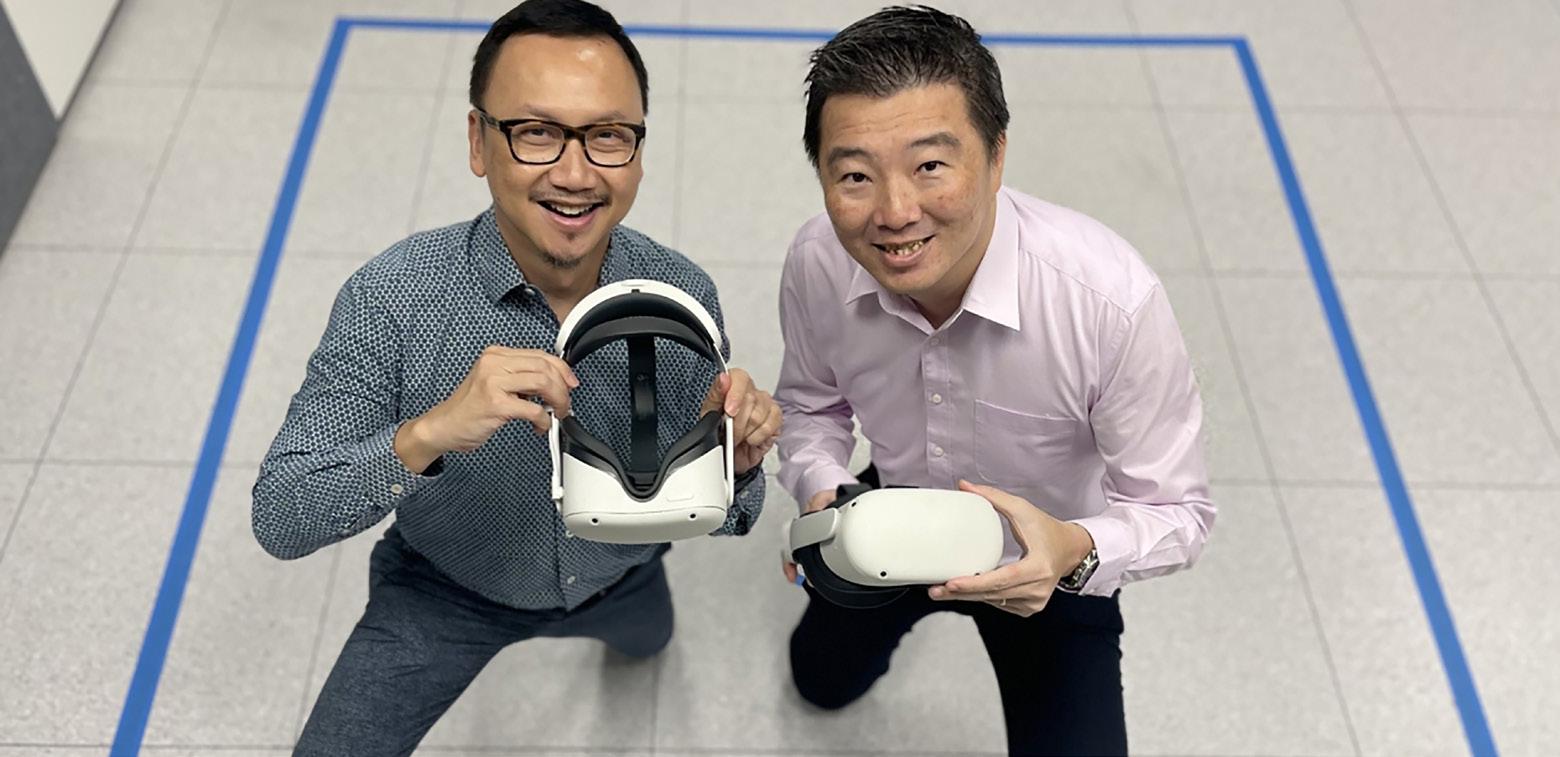
SINGAPORE
Training sessions for staff at Tan Tock Seng Hospital (TTSH) have taken a futuristic turn, resembling a step into a science fiction world, with the adoption of a virtual reality (VR) platform. This approach has allowed healthcare professionals to engage in immersive, simulated scenarios which create a vivid experience that closely mirrors real-life medical situations.
TTSH collaborated with the Centre for Healthcare Innovation (CHI)’s Kaizen team for its first VR learning platform called My Care VR. This enables healthcare staff to learn and practice using VR in a safe and controlled environment.
“Our staff can keep practising until they feel competent and ready before they apply to a real-life project," Loo Wei Hann, manager at the Kaizen Office in the CHI said. He spearheaded the accelerated development and testing of VR training at TTSH.
Futuristic healthcare education
The scenario being used for VR training is a blood-taking exercise, where staff can apply the lean knowledge they acquire to optimise the blood-taking process and reduce the time taken for each patient.
To ensure accuracy, Loo said they worked with the outpatient clinic to
Our staff can feel competent and ready before they apply to a reallife project
co-develop the storyboard for the blood-taking scenario, emphasising the need for realistic depictions to facilitate learner engagement.
Loo explained that the training follows a lean programme, 6S, which equips staff with a structured problemsolving methodology to improve work processes and environments.
He also outlined four crucial steps to plan, develop and execute effective VR training, including defining the training objectives and establishing goals; budgets and technical requirements; content development; and support and guidance for the staff.
Advantages of VR
Unlike traditional learning, Loo explained in his interview with Healthcare Asia how VR training is more efficient because it can be done anytime and anywhere, overcoming operational constraints such as manpower and logistics needed for in-person training.
VR training is also cost-effective and scalable since it can be easily deployed and used on multiple devices, Loo added.
Associate Professor Wong Hon Tym, clinical director at CHI, also told Healthcare Asia that VR is huge and unexplored in healthcare. Still, it is the fastest-growing modality in the sector.
Wong said that one advantage of adopting VR technology is its ability to prepare healthcare staff for delicate situations under reduced risks since the training is conducted in a virtual reality environment.
“By creating these immersive and very realistic training environments, VR can improve the training for healthcare staff and the patient’s outcomes and experiences,” he said.
Risks and limitations
Like any technology, VR has its risks and limitations, so Loo’s team pinpointed the possible challenges and was up to speed in addressing them.
Cybersecurity is one of the risks identified, and to mitigate this, Loo said they stored data strictly within the headset, ensuring that it was not connected to the internal network.
Another issue is the potential for motion sickness when using VR goggles. Loo said this is being addressed by advising participants to pace their movement slowly to avoid discomfort.
Feedback and outlook
As part of the VR development process, Loo said they invited endusers to test and provide feedback at various stages to improve the scenario and ensure that it can cater to a diverse group of learners.
Loo revealed that since launching the VR in January 2023, 100% of the participants agreed that the VR application has enhanced and deepened their understanding of lean knowledge.
Moving forward, Loo said they are looking to extend the VR module to community care partners soon.
When asked if the programme may be available at home, Wong said if the VR tech becomes more cloud-based, staff members would not need to travel to the office to get the module.
Wong said the CHI office also eyes the use of VR for surgical operations training in which a surgeon can have a VR plot of a patient’s abdomen or any organ they need to operate on.
10 HEALTHCARE ASIA
Clinical Associate Professor Wong Hon Tym, Clinical Director, Centre for Healthcare Innovation (CHI) Mr Loo Wei Hann, Manager, Kaizen Office, Centre for Healthcare Innovation (CHI). /TTSH Media
Consuelo Marquez


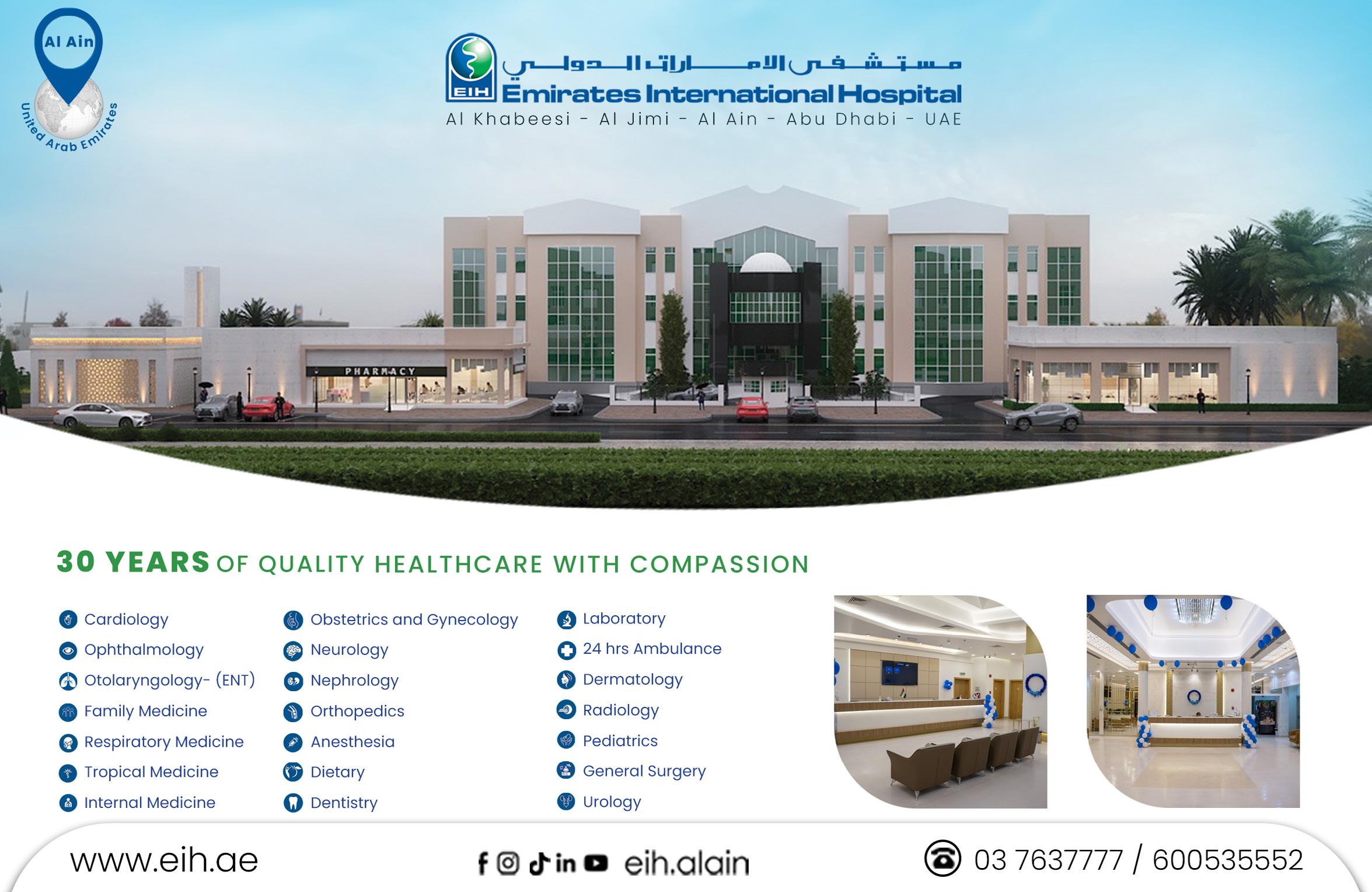
Committed to EXCELLENCE in HEALTHCARE and Beyond... SCIENCE THAT MATTERS... EVERY LIFE, EVERY MOMENT, EVERYDAY To learn more about our offerings, kindly scan the QR To learn more about our offerings, kindly scan the QR AW RDS 2023 Marketing & Communications Initiative of the Year-India
HEALTHCARE TECH: ROBOTICS
Hopebotics' robotic hand aid offers new hope for stroke patients
With the use of HandTasker, recovering patients will only need to visit hospitals monthly instead of weekly.
by Consuelo Marquez
HONG KONG
Getting stroke patients out of hospital faster and with fewer follow-up visits is the aim of Hong Kong start up Hopebotics with its lightweight robotic arm that facilitates brain motor relearning.
HandTasker utilises a flexible actuator and 3-D printing technology to fit the soft-hand robot with natural hand movement, assisting the elderly in doing easy and lightweight tasks essential for stroke patient rehabilitation, such as picking up a phone, writing, or grabbing food.
Raymond Tong, Hopebotics' cofounder, highlights that HandTasker could facilitate patients' recovery at home and reduce hospital visits from weekly to monthly, decreasing downtime from daily activities and alleviating strain on Hong Kong's healthcare system.
"The elderly still can be independent, if they can recover better from therapy and they can still live a normal life," said Tong.
The device is also customisable and can accommodate patients with different hand sizes and stiffness levels.
To support the hospitals and therapists in tracking the patient's condition, the HandTasker comes with real-time muscle spasticity monitoring, helping the healthcare staff from hospitals to monitor the progress remotely.
Promoting HandTasker
To promote the use of the HandTasker, Hopebotics has collaborated with hospitals in the rehabilitation of stroke patients.
Currently, the startup is actively working with non-government organisations, the Hong Kong Stroke Association, and the Pamela Youde Nethersole Eastern Hospital in Chai Wan, Hong Kong.
Hopebotics blends “hope” and “robotics” since their company enables stroke patients to lead healthy lives despite their age.


The elderly still can be independent, if they recover better from therapy and can still live a normal life
Tong, a biomedical engineer, alongside his co-founders Zheng Li and David Shi, started Hopebotics Co. Ltd. to provide the latest soft wearable robotics for stroke rehabilitation. Before they could create the lighter robot hand for stroke patients in 2012, Tong had already made a robotic system for rehabilitation known as the Hand of Hope. But this device was too heavy for his target market — elderly patients. What the trio developed years later was the use of lighter materials for the robotic hand device. The latest version of the HandTasker is only about 150 grams.
Healthy ageing
The World Economic Forum forecasts that by 2050, over 40% of the population of Hong Kong, South Korea, and Japan will be 65 years old and above. These countries also represent the three markets with the largest elderly population in the world. Tong, who supports elderly living globally, said the goal for the next
generation is to keep people healthy through technology.
“Everyone’s enjoyed their life and everyone can enjoy good health, even if they are at the age of 80 or 90,” the Hopebotics co-founder said.
Next tech: ExoMuscle
Tong said they have developed another robotics tech to rehabilitate those with shoulder or walking problems. This new type of tech is called ExoMuscle, a bionic artificial muscle like the structure of a skeletal muscle but surpassing it in terms of stress, strain, power density, and efficiency. The tech can lift a 20-kilogram water bucket.
ExoMuscle is also adjustable, achieving variable actuation stress of up to 0.9 MPa. This capability makes it suitable for use in various joints and muscles of the upper limbs. It can also be customised to meet the needs of different stroke patients during rehabilitation.
12 HEALTHCARE ASIA
The device is also customisable and can accommodate patients with different hand sizes and stiffness levels (Photo from Hopebotics' official website)

HOSPITAL TOUR: MAKATIMED

MakatiMed's OSS relieves ER and surgery congestion
Its outpatient surgical suite (OSS) offers a short-term stay in the hospital where billing and doctors are available for easier patient flow.
by
The Makati Medical Center (MakatiMed) has set up an outpatient surgical suite, designed to get patients treated more quickly and discharged without lengthy check-ins with the main hospital system.
The hospital, which typically serves 1,481 patients daily, invested P30m (US$528,373) on setting up three operating rooms, cashiers, and a separate room where staff can check patients' vital signs.
Healthcare Asia recently visited MakatiMed for a quick tour to check out the hospital's latest facility and most advanced quipment.
The OSS tour
Dr. Saturnino Javier, MakatiMed medical director, said that the planning and launching of the center took four months. Although the OSS is an extension of the hospital's main surgery units... (continue rest of article)
“It’s an easy-out kind of service with a goal in mind of having it like a one-stop shop so you have the billing
After that minor procedure, you are assured that you will be out right away
there, the cashier, and the doctor in attendance to your case,” he said, adding that patients will not face the usual lengthy process of being admitted and discharged.
“After that minor procedure, you’re assured that you will be out right away,” he said.
With the OSS handling short routine operations, the emergency care units and main surgical suites will now focus on critical procedures instead.
When asked why MakatiMed chose to invest in an extension in the hospital rather than ambulatory centres, Javier said the latter would require more efforts for emergency response measures.

“[If it’s ambulatory] you’re going to stay off-site, away from the main hospital. [Ambulatory centres] are certainly doable but you just have to be able to contend with those provisions [emergency response measures],” he elaborated.
The outpatient surgical suite can accommodate around 20 to 30 minor procedures each day which covers
general surgery and procedures in the fields of ophthalmology, gynecology, and dermatology.
MakatiMed has also invested in cutting-edge equipment such as its TomoTherapy machines and Computed Tomography Scanner (CT Scan) to treat and diagnose some of the country's most common health problems like cancers and heart ailments.
Retrofitting
The 300-metre OSS was already built but it had to be retrofitted to become a safe and sterile operating room environment.
“This is the area beside our current emergency room so this had to be walled off and separated exclusively for its minor operations, which is the thrust of the outpatient surgical suite,” said Javier
The whole suite has a nurse station, three operating rooms, recovery areas, a consultation room for checking of vital signs, two registration areas, and a billing, payment and releasing area.
Outside the operating rooms is a sanitation stop for MakatiMed staff to dispose of their medical wastes properly and wash up before and after surgical procedures.
Their waiting areas have LA-Z-Boy chairs installed where patients can feel comfortable whilst waiting for their procedure and a short recovery area for post-surgery evaluation.
MakatiMed’s OSS is handling local anaesthesia procedures but expects to expand more procedures requiring moderate sedation, which requires anaesthesia machines, said Javier.
“This will now be the second phase that we intend to build and construct as an expansion plan for the outpatient surgical suite,” Javier said.
Top-notch service
MakatiMed is aiming to expand its services to a wide range of surgical operations by coming up with more advanced technology across all surgical fields, Javier said.
“Whether it’s oncology, gynaecology and obstetrics, paediatrics, cardiology, even neurology, we will be able to extend quality and top-notch care to all of this disease,” he said.
Read full story at https:// healthcareasiamagazine.com/
14 HEALTHCARE ASIA
MakatiMed plans to expand its OSS for more procedures requiring moderate sedation
PHILIPPINES
Consuelo Marquez
Saturnino Javier
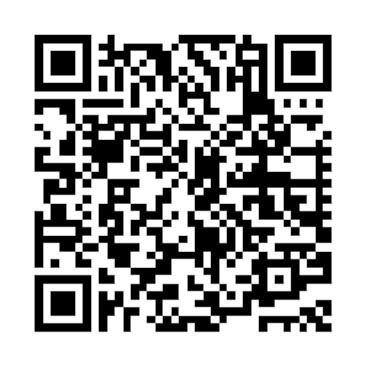
HEALTHCARE ASIA 15 2311025344 11/23 The Medical Protection Society Limited (“MPS”) is a company limited by guarantee registered in England with company number 00036142 at Level 19, The Shard, 32 London Bridge Street, London, SE1 9SG. MPS is not an insurance company. All the benefits of membership of MPS are discretionary as set out in the Memorandum and Articles of Association. MPS® and Medical Protection® are registered trademarks. For information on MPS’s use of your personal data and your rights, please see our Privacy Notice on our website. Always there for you medicalprotection.org Whatever tomorrow holds, we’re ready. Our support is continually being developed and enhanced to ensure that your protection is future-proof. • A wide range of protection beyond claims • Advice for any eventuality your career may face • Fast to respond to unexpected situations • Support today, tomorrow, and yesterday
Digital kiosk speeds up hospital queues
Premier Jatinegara now halves patient waiting hours and offers more post-care e-services.
by Aulia Pandamsari
Jakarta's Premier Jatinegara Hospital has now made it easier for patients to be admitted into the system, by allowing them to book their check-in via Whatsapp and scanning a barcode on their phones.
This should cut outpatient waiting times from three to four hours to just one-and-a-half hours, said Dr. Susan Ananda, CEO of Premier Jatinegara Hospital.
Kiosk features
The self check-in kiosk facilitated a virtual queue view and enabled efficient consultations. For those unfamiliar with the app, they can rely on queuing with staff assistance.
Dr. Susan explained that once patients are in the queue, their status changes to ‘waiting’ and ensures doctors are informed of their arrival. Meanwhile, scheduled patients are advised to arrive 15 minutes in advance. This facilitates efficient consultations.
The kiosk allows patients to digitally access their daily schedule and medical records upon arrival. Through it, patients can select convenient payment methods and have medicine be delivered to their homes.
“Patients now have greater control to seamlessly proceed their treatment and avoid long queues every step of the way,” said Dr. Susan.
Space efficiency and patient safety
Beyond reducing patient queuing times, the system aimed to optimize hospital capacity and operational efficiency. By minimising waiting times, the hospital effectively managed patient turnover within existing infrastructure.
“With the existing capacity usually 40 seats can accommodate 200 people but with a shorter time, it will be 400 people,” Dr. Susan explained.
Digital innovations such as the Integration of Monthly Index of Medical Specialties (MIMS) with electronic records ensured medication alignment with doctors' instructions and enhanced patient safety.
“Through MIMS, doctors don’t need to search manually, but the drugs prescribed will be reviewed first and will give a warning to doctors to evaluate the treatment,” she said.
Digitalisation roadmap
The kiosk is the first of many innovations planned by Dr. Ananda’s team. Over the next two years, Premier Jatinegara Hospital plans to enhance infrastructure and services. Initiatives include establishing a modern mixing room for sterile drug compounding and adding emergency and cardiac telemetry facilities for remote heart monitoring.

The hospital aims to integrate the Hospital Information System with medical devices, implement patient monitoring capabilities, and improve food ordering systems and paperless operations through tablets.
A forthcoming mobile app aims to provide easy access to doctor schedules, registration, laboratory results, and medical records, further streamlining the healthcare experience for patients.
Dr. Susan emphasised their commitment to converting patient records into digital formats. Enabling patients to be able to evaluate their health and take better care of themselves with those innovations.
“Premier Jatinegara Hospital remains committed to embracing digital innovations that optimise patient care and convenience even further in the future,” said Dr Susan.
Responding to challenges
By minimising waiting times, the hospital effectively managed patient turnover within existing infrastructure.
Dr Susan said implementing digital innovations posed infrastructure which sometimes need large physical form and requires a large space, human resource that requires the ever-evolving adoption and adaptation for new technologies, and financial challenges.
This made Premier Jatinegara Hospital respond by selectively choosing technologies that fit best and manage it well, offering Training of Trainer System and opening special classes for employees, and committing to an annual budget for digital innovation.
16 HEALTHCARE ASIA
CEO INTERVIEW
Dr. Susan Ananda, CEO of Premier Jatinegara Hospital
INDONESIA


More than
2,000
critically ill children were well cared for and returned home safely.


Our Pediatric Emergency Medicine Team can promptly evacuate, repatriate, and refer domestic & international children patients within 24 hours via:
• Ambulance or Ground Transfer
• Emergency medical motorlance
• Air Ambulance (Sky ICU)
• Jet Planes and Helicopter Medical Services
Our Medical Transport Services have been accredited in the U.S. and Europe by The Commission on Accreditation of Medical Transport Systems (CAMTS and CAMTS EU), an international standard recognized worldwide for the safety of ground & air transport of patients suffering from accidents and all forms of acute/severe/critical/chronic & complex symptoms of accidents, cancer or complicated diseases.
For more information, please contact : info@samitivej.co.th




Super Bear รถฉุกเฉินไดรับอนุญาตแลว กรุงเทพมหานคร #SavingYoungLives
New unit boosts pediatric heart care in Indonesia
Open-heart surgery and cath labs are more accessible for treating congestive heart disease
by Aulia Pandamsari
With approximately 12,000 children in Indonesia suffering from congestive heart disease each year, and only half of them receiving treatment, there is a crucial demand for specialised heart care. The Mandaya Royal Hospital Children's Heart Center in West Jakarta plays a pivotal role in bridging this gap, offering essential support in the face of the high incidence of pediatric heart disease.
President Director of Mandaya Royal Hospital, dr. Ben Widaja spoke to Healthcare Asia, highlighting the urgency due to limited availability of cardiac catheterization services–or cath labs–in the country. Amongst the 40 hospitals offering cath labs, only 10 hospitals have the capacity to perform open-heart surgery.
“We realised the importance of treating heart disease in children and establishing it as our priority in 2023,” he said.
Mandaya Royal Hospital's new pediatric heart unit is equipped with modern, state of the art facilities, and a team of experienced pediatric cardiologists.
Three clinical advantages
This dedicated Children's Heart Center embodies a transformational approach in three key clinical advantages, designed to revolutionise heart care accessibility and quality across Indonesia.
Firstly, the center boasts a comprehensive in-house medical team, eliminating the need for external referrals. The team comprises specialized experts ranging from interventional pediatric cardiac consultants, pediatric cardiac mapping experts, cardiac anesthesia consultants to cardiac surgeons. This robust team, equipped with extensive expertise ensures a thorough care for young patients battling heart disease.
Secondly, the center embraces an integrated and multidisciplinary strategy. Collaborative efforts among medical professionals facilitate a holistic approach, encompassing diagnosis, interventions, and long-term care. This cohesive teamwork enhances the quality and efficiency of pediatric heart disease management.
Thirdly, the Heart Center includes state-of-the-art technology, including the latest cath lab room and advanced equipment like intravascular USG, NICU facilities for newborns, and an operating room. Additionally, facilities such as cardiac surgery, cardiac MRI, cardiac spectral CTScan, 3D Echocardiography as well medical rehabilitation and hydropool therapy to ensure comprehensive care and optimal recovery to be able to treating congenital heart diseases such as perforated heart (ASD), heart valve disorders, heart failure, and tetralogy fallot defects (TOF).
In establishing facilities such as Cath Lab Azurion 7, Heart Lung Machine, necessitated a substantial investment

12,000 children annually grapple with congestive heart disease, yet only half receive treatment
of approximately IDR30b ($1.98m). Despite this significant expense, the hospital remains committed to ongoing advancements, collaborating with renowned international health institutions like the Cleveland Clinic and the Royal Brompton & Harefield Hospital. These collaborations aim to enrich the expertise of Mandaya's pediatric cardiologist team, ensuring the continuous evolution of their capabilities in handling complex cases.
Center of excellence
Furthermore, Mandaya Royal Hospital's commitment to excellence extends beyond pediatric heart care. The institution has established various centers of excellence, including the Center for Neuroscience & Surgery and the Center for Advanced Cancer & Radiotherapy. With a vision to excel in treating chronic and terminal diseases like cancer, the hospital offers cutting-edge technology such as Elekta Versa HD Radiosurgery and Digital PET Scan Omni Legend, complemented by a senior oncology team.
What sets Mandaya apart in cancer care is its holistic approach. It provides pain clinics for pain control, home care services, housing facilities within the hospital to a patient community that provides psychological and emotional support as well as direct support from cancer survivors.
“This is what makes our cancer services very different, because we think about both the medical aspect, safety, comfort for patients and families,” said dr Ben.
With a steadfast dedication to clinical excellence and an unwavering commitment to providing healthcare services, Mandaya Royal Hospital continues to strive to provide the best health services in Indonesia.
18 HEALTHCARE ASIA CEO INTERVIEW
President Director of Mandaya Royal Hospital, dr. Ben Widaja
SCAN FOR FULL STORY
INDONESIA


From bricks to clicks: APAC shifts to virtual hospitals
Virtual care models will be more affordable than new physical infrastructure
by Consuelo
Virtual hospitals are becoming more prominent in the Asia Pacific healthcare sector. This shift is changing how health systems operate, notably in reducing waiting times and facilitating remote access to healthcare experts. A critical question arises: how can hospitals effectively blend technology with traditional care to provide emergency or inpatient acute care in patients' homes?
Rebecca Kannourakis, an associate partner at McKinsey & Company Limited, points out that the first step is to assess whether creating a virtual hospital is feasible and beneficial. This evaluation allows hospitals to make informed decisions that are appropriate for their specific context and resources.
“A key part of this is looking at some characteristics that are largely driven by geography and these can include existing virtual and at-home care landscape in the geography that the provider operates in,” said Kannourakis.
This step, she said, is the trickiest one as some providers have not yet begun their journey of virtual care. At present, this new healthcare system is available in Japan, South Korea, Singapore, India, and Australia.
The second step is for providers to reimagine core patient journeys and establish the right success metrics and targets that comply with their missions and objectives.
This includes the hospital goals for patient adoption, experience, and outcomes, workforce, easy execution, and financial impact, explained Kannourakis.
The third step is planning to ramp up the process, which refers to the readiness to implement virtual care models. She said this requires consideration of governance systems, clinical pathways, provider partnerships, logistics, and technology.
“This considers the services they want to provide and the presence of other virtual care services, the maturity of clinical data systems, and making it a tangible plan for rollout to achieve what they say is their objectives,” she stressed.
The final step is increasing efforts as providers may aim to develop a plan to scale their services to promote longterm financial and non-financial benefits and evaluate change-management risks.
Improving patient experience
After building the virtual hospital, there are many benefits such as flexibility, convenience, comfort at home, faster recovery, and avoiding readmissions. But Kannourakis said each model should be tailored depending on the condition of each patient.
She cited as an example the case of an 80-year-old woman with cellulitis, a skin condition. Kannourakis said this condition needs a five-day traditional hospital visit but

with a thorough screening process, the patient will need to be eligible before her physical visit.
“It involves looking at her home environment to make sure that it’s suitable. For example, it has an internet connection to enable some of that important technology and then finally, that the patient is comfortable being in his home setting,” she explained.
Virtual hospitals have been proven effective in Australia and an example is the South Australian Child and Adolescent Virtual Urgent Care Centre which provided care to more than 2,000 patients in its first three months of operation, with almost 90% avoiding hospital visits.
“We can see that as an alternative to bricks and mortar hospitals. This at-home virtual care model is emerging as impactful,” Kannourakis said.
Low-income markets
It uses a combination of telemedicine and in-person visits to provide high-quality hospital-grade care in the comfort of someone’s own home
The cost of living has been taking a toll on how patients in Asia keep getting healthy and a 2022 National Library of Medicine study showed that developing nations such as Bangladesh, India, Nepal, Pakistan, and Sri Lanka spend below 4% of their GDP on healthcare.
To resolve this problem of low funds when building a virtual hospital, Kannourakis advised that providers establish local partnerships and stakeholder engagement.
A comprehensive understanding of the healthcare landscape will be needed for a financially sustainable model, Kannourakis added.
The McKinsey executive noted that virtual hospitals can also be a great investment as they keep addressing the high patient demand, it would be more cost-effective than building new hospital infrastructure.
20 HEALTHCARE ASIA
Rebecca Kannourakis, associate partner at McKinsey & Company Limited
INTERVIEW
APAC
Marquez



McKinsey calls for 'disability markers' in e-records
Specification helps providers and policymakers devise inclusive and equitable solutions
by Consuelo Marquez
Healthcare providers should add “disability markers” in their existing electronic health records to improve healthcare services for people with disabilities, who are facing low life expectancy, experts from McKinsey Health Institute and The Missing Billion Initiative said.
In a recent data review, McKinsey Health Institute showed that between 2009 and 2023, 63 out of 188 economies had no data sets with functional-difficulty questions that would assess a patient’s difficulty in completing tasks.
“We see a lot of potential for [these countries] to add these markers to compare [people with disabilities’] health needs, health status, and outcomes of people with different types of disabilities,” Amn Nasir, engagement manager for McKinsey Health Institute, told Healthcare Asia
“Also, to compare the outcomes of people with and without disabilities, [so] that governments are better able to provide care and serve the health needs of people with disabilities,” added Nasir.
Hannah Kuper, lead on evidence and research of The Missing Billion Initiative, said better data for people with disabilities can address the gap of reduced life expectancy for such patients. The lack of data points to life expectancy of disabled patients, who were found to die at least 15 years early.
“If there’s this failure of data and evidence, that can be a failure to act. On the other hand, if that evidence is available, then it can provide a stimulus for action,” Kuper told Healthcare Asia
One of the best examples of enhancing data for disability is South Korea, which implements a national disability registration system linked to electronic medical records and national health insurance data.
“For example, if I were a policymaker in their health ministry, I could use this data to identify the differences in cervical cancer care for women with and without disabilities, and can pinpoint exactly where in that care journey a woman with disabilities could face inequities in care, such as lower screening, and then devise policies that help address these specific gaps,” said Nasir.
A healthcare company can boost its reputation for inclusivity, improving the value proposition to customers who may be willing to carry on a long-term relationship. Data from McKinsey showed that over 1.3 billion people are living with disabilities all over the world.
Tools for helping the disabled
Aside from disability markers, Nasir pointed out that data collection is also needed to enhance data for disabled patients’ services. Take the UK, for example, where a voluntary registry is made available for people with learning disabilities. This sector can be better served with longer appointments and

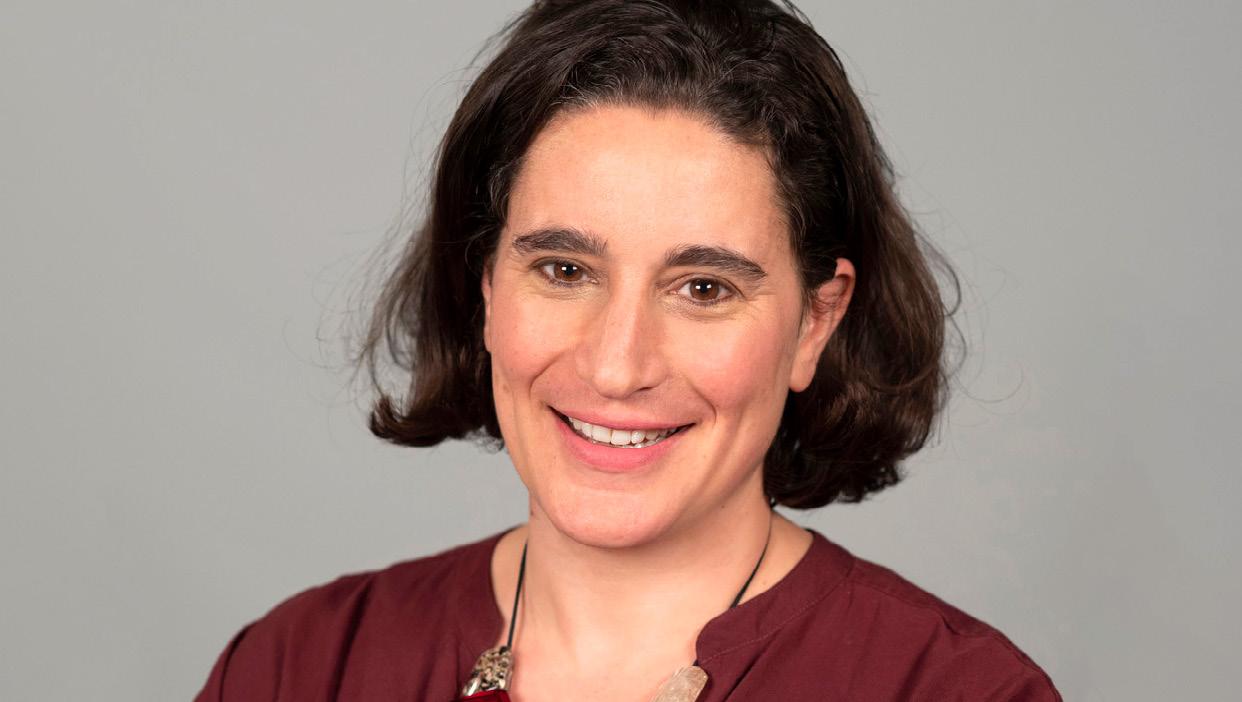
If there’s this failure of data and evidence, that can be a failure to act.
On the other hand, if that evidence is available, then it can provide a stimulus for action
the use of accessible communication material to aid them in making decisions regarding their healthcare needs.
Conducting surveys is also necessary, even by using simple technology such as tablets and mobile phones, said Nasir.
Meanwhile, to bridge the gaps in data usage and analysis, there is potential to use machine learning, advanced analytics, and geospatial mapping to analyze health data.
Using these tools will help healthcare providers correlate disability health data to other relevant information like social economics, for example. Identifying the linkages between all of these issues and then publishing the comprehensive data would be useful for policymaking.
For Kuper, healthcare delivery for disabled patients can be enhanced by using tools and technology such as integrating sign language interpretation.
She cited Malaysia as one of the best examples among Asian countries, where smartphone applications were developed to support people undergoing rehabilitation after a stroke. Also, India leads in telemedicine delivery.
Incentives for registration
The study also indicated that data can be improved by encouraging a high percentage of registries from disabled patients. Kuper said some countries, even in Asia, offer disability allowances which can be a great mechanism to link this incentive to healthcare data.
“I do think though, that the future really is in using these large electronic health records, and perhaps using AI or machine learning to come up with disability markers because we'll never be in a situation where all people with disabilities are registered,” she added.
22 HEALTHCARE ASIA
Amn Nasir, engagement manager for McKinsey Institute
Hannah Kuper, evidence and research lead of The Missing Billion Initiative
INTERVIEW
SCAN FOR FULL STORY
APAC


COUNTRY REPORT: HONG KONG SAR
Why GBA might not be ideal for some of HK’s grandmas and grandpas
HK retirees may be reluctant to move to GBA because of elderly home quality and proximity to communities.
by Consuelo Marquez
HONG KONG
Concerns linger on healthcare quality and distance from senior population’s communities if they relocate to the Guangdong Bay Area (GBA), which is seen to resolve a mismatch of supply and demand in elderly care services and infrastructure. Roland Berger’s data showed that private residential care homes for the elderly (RCHE) are nearly congested, with 71% of RCHE occupied.
To resolve this, Hong Kong’s healthcare should increase geriatric departments and hospitals whilst employing AI and wearable devices for preventive care.
Interviewed by Healthcare Asia recently, Alan Yau, KPMG China’s head of real estate in Hong Kong, gave a litany of these concerns: “Is it convenient for me to come back to Hong Kong? Would it be a very long distance? Also, the family matters, like how often my family would come up to see me.”
What Yau sees coming, though, is that GBA and Hong Kong connectivity will be improved due to a high-speed railway in the works.
Access to resources
Yoshihiro Suwa, a partner and head of life sciences Southeast Asia at Roland Berger, cited a similar case in Johor Bahru, a Malaysian city located near Singapore and is targeted as an area to support the city-state’s shortage of elderly care resources.
Whilst the cost of living is cheaper in Johor Bahru, Suwa said ghost buildings abound because people do not want to move away from their respective communities. “It’s not that easy to convince everybody to move to GBA and this Johor Bahru case could be one of the interesting benchmarks to look at,” Suwa told Healthcare Asia magazine.
Laurent Doucet, a partner and head of Roland Berger’s Hong Kong office, said that there were initiatives in place to set up quality medical

It is only a temporary solution for those that are still autonomous enough; it cannot cater to someone throughout their end of life.
services from Hong Kong in the GBA in 2019, but their delivery was delayed due to protests and the COVID-19 pandemic. Doucet said all these initiatives need further development to be implemented.
Kevin Chang, head of Bain’s Greater China Healthcare and Life Sciences, opportunities from the GBA include joint training, staff exchange programmes, recruitment, and collaborative research on geriatric care.
But he noted that there is a need for harmonised licensing and accreditation to facilitate the mutual recognition of qualifications and credentials of healthcare professionals across the GBA.
This also ensures that care facilities across the region adhere to quality standards. There should also be consistent consumer protection laws in place to safeguard the rights of the elderly, said Chang.
“Whether it's regarding fees, service quality, or dispute resolution, the elderly and their families can have clarity and assurance,” said Chang.
Meanwhile, Arnaud Bauer, head of healthcare services and healthcare M&A for Southeast Asia and partner at L.E.K Consulting, said only part of the elderly care gap can be fixed by relocating them.
Bauer said there were even cases in the UK where the elderly were
being relocated to Thailand due to the more ideal ratio of healthcare staff to patients. This, however, is less of an option for the elderly getting to a higher state of dependency, because they would rather be closer to family and friends.
“The displacement of those elders to a different market, even if geographically close, is only a temporary solution for those that are still autonomous enough; it cannot cater to someone throughout their end of life,” he told Healthcare Asia
Geriatric departments
Chang said geriatric departments should be established within hospital facilities to offer such services as fall prevention, dementia care, and management of chronic diseases.
“A good geriatric department in the hospitals is not just focusing on treatment. It needs to be connected to the prevention, the diagnosing the maintenance of well-being, before the patient becomes an actual patient,” said Chang.
He also suggested posthospitalisation translational care to reduce the risk of readmission. These care units will focus on patients who have been discharged but are not yet ready to return to their homes or transfer to a long-term care facility.
Since Hong Kong’s geriatric population is expected to be over
24 HEALTHCARE ASIA
Photo by Mark Hang Fung So from Unsplash
46.3% by 2050, figures from Bain showed that demand for elderly homes will rise whilst supply will grow by only 0.24%. KPMG’s Yau acknowledged that infrastructure, particularly the strategic building of the geriatric care properties within medical facilities, is a key element for successful elderly care.
Yau pointed out, as an example, the Hong Kong Housing Society, which works with private hospitals to provide, amongst others, a Chinese medical service within the elderly care facility.
Prime properties, elderly hospitals
According to KPMG, high-end elderly properties for Hong Kong’s oldest population are insufficient. Yau said around 95% of elderly properties are basic living facilities whilst only 5% are high quality.
The main difference is that high-end properties offer more privacy, having dedicated bathrooms and kitchens per occupant. These properties also have better communities within the premises such as gyms, cinemas, and food & beverage outlets.
In contrast, basic elderly properties usually feature a shared bedroom and toilet. There are also limited facilities within the premises to keep elderly people interested, said Yau.
On hospital care, L.E.K. Consulting’s Bauer said hospitals can play a role in treating chronically ill or highly dependent seniors but cannot replace residential care settings.
Amongst the key factors of increasing dependence is the rising prevalence of dementia amongst senior citizens, Bauer said it is at 5% to 8% among those aged over 65 and even higher at 20% to 30% when they reach 80. In addition, the hospital setting is not well suited for long-term care.
“In addition to being generally a care setting that is not well regarded by the elders, we’ve seen in countless studies evidencing,” he added.
For Bain’s Chang, there is always a need to increase geriatric hospitals, but Hong Kong should rethink its approach to hospital care by offering healthcare outside hospital walls.
Roland Berger’s data showed that Hong Kong has 20 geriatric hospitals, with beds that can fill up to 20,000 patients but this is still not enough.
COUNTRY REPORT: HONG KONG SAR
Wearable devices and AI will also help in preventive care to track a senior citizen’s lifestyle or their medical history, said Chang.
Hong Kong may also emulate Australia’s “My Aged Care” where hospitals can create digital platforms that the seniors can access for booking medical appointments and finding community events tailored for them. Mobile clinics can also help reach seniors who have mobility issues or those who live in remote areas, said Chang.
Another way is that there must also be hospital partnerships with residential care homes to ensure that these homes are equipped to provide medical care in line with hospital standards, he said. This involves periodic visits by hospital staff, training home care staff, or setting up telemedicine facilities in these homes.
Tech for seniors
Doucet of Roland Berger said Hong Kong needs to deploy smart robotic care and remote care technologies to support the elderly in living independently and securely in their homes. These technologies include wireless sensors for monitoring and microtrackers for persons with dementia.
From a management firm’s perspective, L.E.K. Consulting said hospitals can draw inspiration from iHealth Screen, an easy-interface app developed by the Hong Kong Jockey Club CADENZA for health screening tests that cover 11 common health topics on older adults.
“It could definitely be seen as a way for healthcare providers to be a part of this market as well, providing their own app and encouraging patients in coming over to seek multidisciplinary assessment,” Bauer explained.
Land premium discounts
Another strategy to solve the elderly care home scarcity is for the government to offer discounts on land premiums so that investors can receive better returns, Yau said.
“Hong Kong is a very expensive city, whereby if you build an [elderly home], it takes 30 or 40 years to get the return,” he said.
Doucet agreed that government incentives will address the nearly congested occupancy rate in RCHE, which is at 71% for private


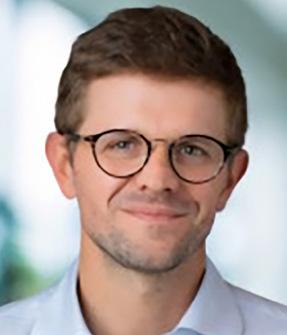
RCHE as of September 2022.
“If a developer is providing some residential care home, then there will be a subsidy to avoid a premium on the land.
That could encourage the private developers along the way to also provide some [elderly places],” said Doucet. Meanwhile, a 91% occupancy rate was recorded in subvented and contract RCHEs and 68% in self-financing homes.
The government, nevertheless, has promoted a scheme for the RCHE, which encourages new private RCHE establishments from private developers, with a target to develop 6,200 more places by end-2027.
Bauer, meanwhile, warned that building private elderly places with out-of-pocket payment may not solve the shortage since it is not affordable for some seniors.
These spaces must likely be subsidised similar to elderly care areas funded by the government or nongovernment organisations, which are almost fully occupied, said Bauer. Figures from Oxfam Hong Kong showed that 45% of citizens aged 65 and above live in poverty.
AI and support staff shortage
Building private elderly places with out-ofpocket payment may not solve the shortage since it is not affordable for some seniors
With AI and internet-of-things helping with hospital productivity and augmenting manpower, Doucet reminded the need for data privacy and consent. Consent from the family is especially important when handling patients with dementia.
Suwa, meanwhile, said AI can help in automating tasks and communications with the elderly but diagnosis, treatment, and other interventions should be up to the healthcare provider.

HEALTHCARE ASIA 25
Access to resources and community events are top factors for retirees (Photo by HUI YT on Shutterstock)
Kevin Chang
Alan Yau
Arnaud Bauer
Vietnam hospitals free from tedious procurement bidding
The government imposed a new regulation that will get rid of bidding and give hospitals more flexibility to access products at reasonable prices.
by Consuelo Marquez
Government-mandated price caps in procurement processes previously restricted Vietnamese hospitals' ability to negotiate prices for medical equipment and medicines. Recognising this barrier, the health ministry introduced a regulation granting hospitals to negotiate rates with suppliers.
As such, hospitals are now in a position to access the right medicines and equipment at reasonable prices, said Sakshi Sikka, associate director of pharmaceuticals and healthcare at Fitch Solution Group’s BMI Research.
Luke Treloar, partner and head of strategy for the National Head of Healthcare and Life Sciences in KPMG Vietnam, said the new regulations quicken bidding time after moving past the three quotations needed to purchase a medical device.
Prior to this, hospitals had to receive three quotations before accepting donations from some of the US’ major medical device manufacturers.
“Now, hospitals are permitted to purchase something that isn’t necessarily the absolute cheapest price, which is great news for the global suppliers that are providing high quality and innovative products that aren’t necessarily the cheapest possible solution,” Treloar told Healthcare Asia
Sikkah said the regulation will also eliminate bidding and set prices based on the government’s price caps within the previous 12 months where new prices could not be higher than old prices.
“With this new regulation in place, hospitals will now have more flexibility while still being able to access quality products at reasonable prices,” Sikkah said in her report.
She said it will also make it easier for hospitals to access medicines and equipment at affordable costs but will also help them reduce costs while buying essential goods in bulk.
With this new regulation in place, hospitals will now have more flexibility while still being able to access quality products at reasonable prices
“Furthermore, with more competitive pricing available in the market, patients can also expect lower costs for treatments,” Sikkah said.
According to the International Trade Administration, most of the existing medical equipment in Vietnam’s public hospitals is obsolete and needs replacement. They lack equipment for surgery and intensive care units, it added.
More than 90% of medical equipment in Vietnam is imported, and in 2019, the medical device market amounted to US$1.4b.
Boost diagnosis and treatment
If more equipment is available, hospitals will procure better equipment to treat and diagnose patients. These include high-tech imaging and other diagnostic medical tools, said Treloar.
Yoshihiro Suwa, partner and head of life sciences for Southeast Asia at Roland Berger, Suwa said the new measures will allow hospitals to accept donations and look at the specification of devices flexibly. Some of the most expensive equipment are robotics, imaging devices, and ultrasound.
“If you have better radiation therapy, it will improve some of the efficacy and safety of the treatment which should benefit patients,” Suwa told Healthcare Asia.
Magnetic resonance imaging (MRI) machines can help diagnose conditions such as cancer or other illnesses of the heart, which are some of the common contributors to early deaths in Vietnam.
Impermanence and ambiguity
Meanwhile, altering the guidelines for procurement may also pose some risks for hospitals, which are “largely paper-based,” Treloar warned.
“If they change to accommodate these evolving regulations, and if these regulations are impermanent in nature, they could end up wasting a massive amount of energy, and it’s difficult to change it back,” he told Healthcare Asia.
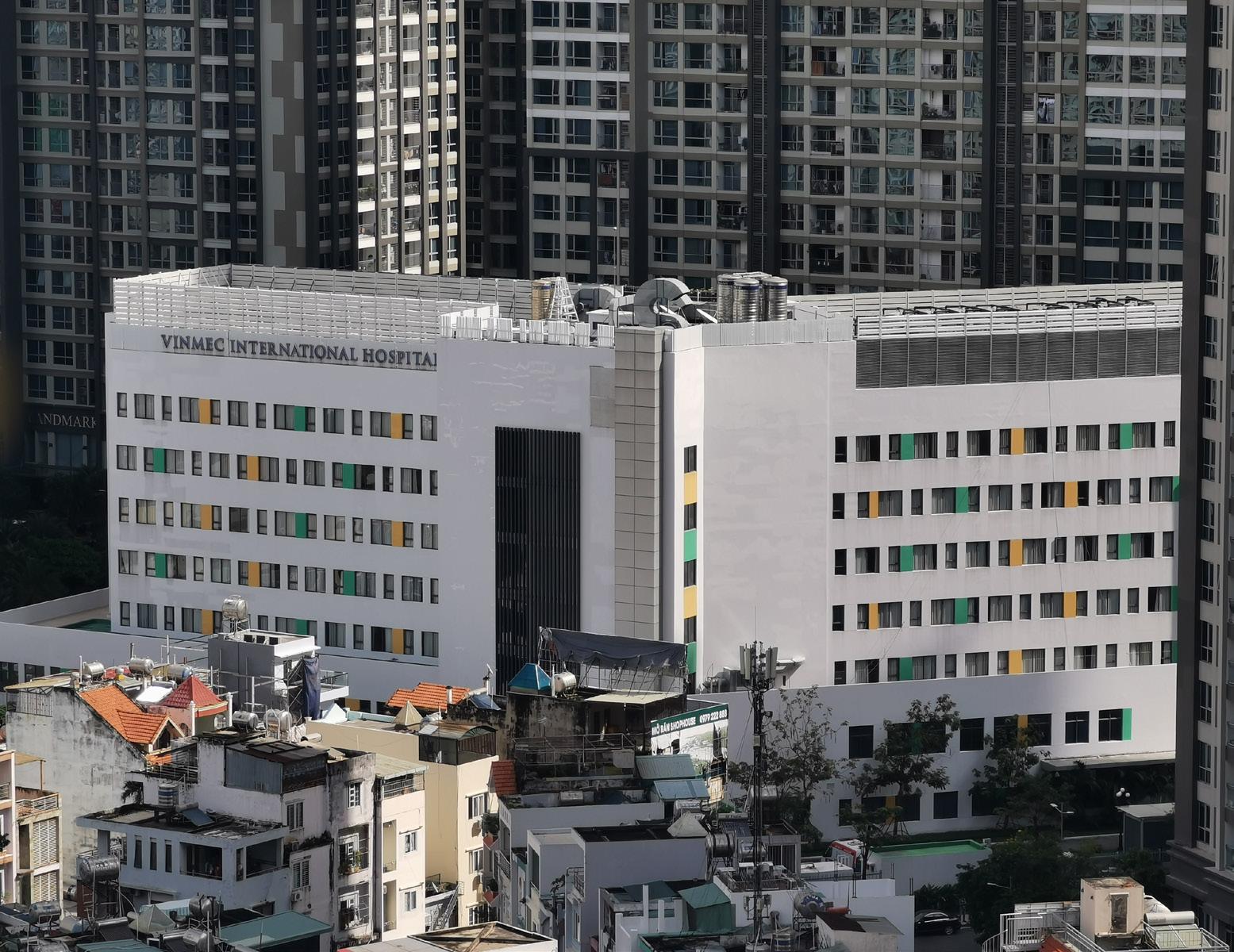
26 HEALTHCARE ASIA
Vinmec International Hospital has recently purchased newer radiotherapy machine models to help alleviate pain in cancer treatments. (Photo from Shutterstock)
VIETNAM
COUNTRY REPORT:
VIETNAM
COUNTRY REPORT: VIETNAM

Currently, Vietnam’s digital health infrastructure is still in its early stages, according to a KPMG study.
The government set a target that by 2025, 95% of its population will have electronic medical records.
However, the country’s telemedicine solutions are still under a pilot phase while AI and big data in its healthcare industry remain limited.
Another challenge would be that hospitals may find the new regulations ambiguous. Treloar described it as a “realistic concern” for hospital auditing of procured or donated expensive medical equipment, especially in recent headlines showing Vietnam’s highprofile health officers getting arrested due to alleged corruption.
“There’s probably a high level of nervousness from the procurement side of the hospitals. Can these regulations be tested in an audit? If there’s any deviation, are they going to get in trouble?” explained Treloar.
A 2022 news report indicated that about 12 health officials were arrested after being accused of wrongdoings in procuring medical equipment, including test kits.
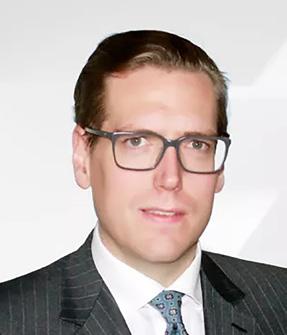

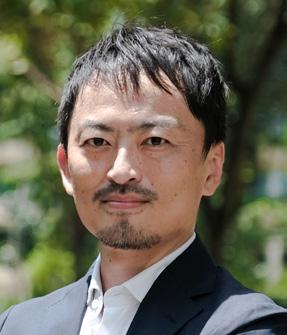
Bigger hospitals
With seamless procurement, Suwa said manufacturers may prioritize bigger hospitals because they would prefer selling bigger process sizes.
“This means maybe suppliers want to prioritize bigger hospitals rather than smaller hospitals with conventional equipment,” said Suwa.
This may not be felt yet but this will affect smaller hospitals located in rural areas because it may take longer to procure a device.
To address this, Suwa suggested tapping group purchasing organizations for public hospitals that may help streamline the negotiation of equipment and medications, especially for smaller hospitals.
Vietnam has about 1,094 public hospitals, which outnumbers its 193 private hospitals, according to KPMG’s latest study.
Bad news for pharmaceutical sales
Although the new legislative adjustments bid good news for hospitals, they may have downside risks to innovative drugmakers because of a threat to profit margins, BMI’s Sikka warned.
“However, the drug price negotiation will limit innovative drugmaker’s profits in the country and high-value innovative medicines will become increasingly susceptible to price erosion, consequently favouring greater use of generic medicines,” said Sikka.
Sikka also said there is a sharp slowdown in the market’s economic growth to 3.3% year-on-year in the first quarter of 2023, which will result in “fiscal consolidation and medicine cost-containment measures.”
For Treloar, the pharmaceutical market will continue to “unlock their addressable market in Vietnam,” offering prices comparable to other market economies globally.
Suwa said competition is likely for pharmaceutical firms when selling generic drugs. However, those who offer innovative medicines can retain prices because some of these innovative drugs have no alternatives in the market.
“Some of the new drugs or new therapies don’t have to reduce the price because there are no 'me-too' drugs. That is where they can profit,” explained Suwa.
[The regulation] may have downside risks to innovative drugmakers because of a threat to profit margins
Generic drugs will continue to account for the majority of Vietnam’s prescription drug sales with a value of VND86.2t (US$3.7b) in 2022 and a projected value of VND95.7t (US$4.0b) in 2023, based on BMI Research’s study.
This is expected to increase to VND139.5t (US$5.7b) by 2027 and to VND216.9t (US$8.4b) by 2032.

HEALTHCARE ASIA 27
Access to new imaging equipment aids early diagnosis of cancer or heart disease
Drug price negotiation may favor greater use of generic medicines
Sakshi Sikka
Luke Treloar
Yoshihiro Suwa
EVENT NEWS: MEDICAL FAIR
Taiwan healthcare innovators aim to provide people-centric healthcare
Startups and medical technology firms do not want to sacrifice patient comfort in care.
by Consuelo Marquez

Just like in other countries, medical technology and startups in Taiwan invested in cuttingedge technologies such as artificial intelligence (AI) and the Internet of Things (IoT). But for them, modern developments must also integrate people-centric approaches.
During the Medical Taiwan held from June 8 to 10, the Taiwan External Trade Development Council (TAITRA) said firms that participated in the event create tailored solutions that will benefit patients and healthcare professionals.
At the opening ceremony, Dr. Pi-Sheng Wang, deputy minister of Taiwan’s Ministry of Health and Welfare, said he agreed with TAITRA that being people-centric is an essential concept of the medical industry. He cited examples such as telemedicine, which he said the government is supporting through laws and regulations.
One of the exhibitors in Taiwan, Wellell, manufactures a mattress that not only eases the workload of nurses
and caregivers, but also prevents the discomfort of patients lying on the mattress for treatments in hospitals.
It provides specialised pressurerelieving support surface solution that inflates in 20 minutes and optimises pressure relief care for hypersensitive patients.
Sigma Care, another Taiwanese exhibitor at the event, provides an ICU bed that can be customised in different variations depending on the needs of patients or instruction of their doctors.
Tech upgrades
Researchers at Kaohsiung Medical University were able to leverage the technology to diagnose AttentionDeficit/Hyperactivity Disorder. It can solve the challenges in traditional diagnosis of ADHD based on the behaviour rating scales, which is oversubjective and inaccurate.
Another exhibitor at the fair, dBio, produced a smart insole that combines AI and IoT technology to accurately detect movement, allowing users to access complete and detailed data about their foot pressure, center of gravity, exercise
intensity, and caloric expenditure.
The smart insole is also comfortable and suitable for athletes who would want to monitor their movement whilst performing tough exercises, dBio’s Edward Chou said during his presentation.
“We are able to offer you data that your smartwatches can’t tell you. For example, your exercise intensity, instantaneous speed, and also through your app, you’re able to compare yourself and your friends to make it more fun,” Chou told the media.
Unmask the mask business potential
When the face masks business declined in the post-pandemic era, most firms selling masks almost went out of business.
But CSD, a Taiwan manufacturer that has been creating face masks even before COVID-19, still pursues the mask business not just for consumers but for markets that constantly use them for work environments such as construction sites and cleaning rooms.
“There is still a big potential in [selling] masks in the industry. In the past few years, we have been focusing on COVID-19 but that is not the entire picture of the mask market,” Willy Wu, international sales specialist at CSD, said.
Another Medical Fair exhibitor, R&R, also showcased its masks. But their products are more diverse as they also make heat patches, water bags, and ice packs which are very popular with athletes.
Over 230 exhibitors, which featured innovations in healthcare, visited the three-day Medical Fair.
Medical devices and smart medical technologies form the biggest category of exhibits, followed by assistive and elder care. 99 procurement meetings were held during the event, connecting Taiwanese exhibitors with purchasers and distributors from Malaysia, Kazakhstan, Brazil, Bangladesh, and Saudi Arabia. The number of delegates increased by 20% this year, owing to post-pandemic recovery.
28 HEALTHCARE ASIA
TAIWAN
230 exhibitors showcase updates in medical devices and assistive care
Being peoplecentric is an essential concept of the medical industry
TAIWAN
























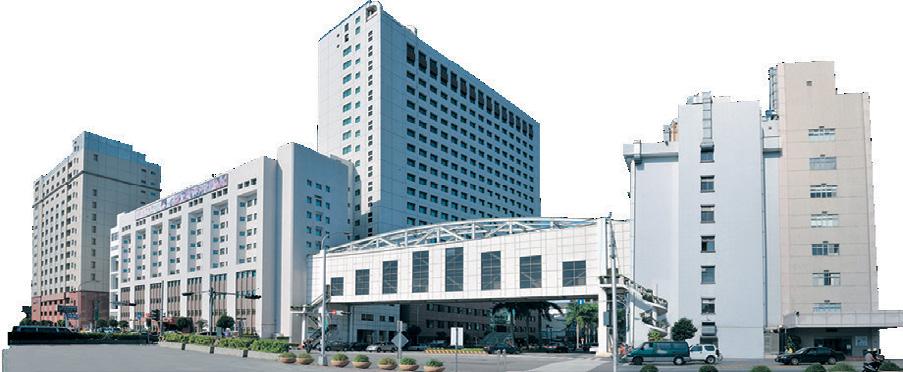
EVENT NEWS: ASIA SUMMIT ON GLOBAL HEALTH 2023
Investing in future of healthcare must consider 4 key needs
Increasing life expectancy and disease burden should prompt the healthcare industry to invest in scalable technology to reduce cost of care and workers’ burnout.
by Consuelo Marquez
The healthcare industry is facing a critical challenge— the increasing burden of diseases, especially chronic illnesses, highlighted by Gerald Chan, cofounder of the investment group Morningstar, at the Asia Summit on Global Health (ASGH) 2023 held at the Hong Kong Convention and Exhibition Centre on May 17.
As life expectancy continues to rise, this demographic shift is contributing to a surge in healthcare costs, with chronic illnesses now accounting for more than 75% of these expenses.
“If people are living longer, it is only to be expected that the financial burden for healthcare will increase exponentially,” Chan said.
Chan said he sees an explosive demand for healthcare services, which may also cause burnout for healthcare professionals.
Whilst bridging these gaps in healthcare delivery will require more digital tools, the problem is that, with several digital platforms being invented, he said it will take time to choose the right one.
Key Mandates
The situation makes it necessary for healthcare technology innovators to consider some key mandates to ensure enhanced healthcare delivery.
Chan enumerated four of these key needs as: better patient experience and superior clinical outcome; lower healthcare cost and reducing utilisation; improving workload and workflow for care providers to reduce burnout; and improving healthcare access for all.
According to World Bank data, Hong Kong’s life expectancy is about 85 years, as of 2020. Common chronic diseases include cancer, asthma, and chronic obstructive pulmonary disease, and diabetes.
More chronic illnesses require long-term management and care, tremendously damaging healthcare systems
Chan said using scalable technology means that the “marginal cost of servicing the next patient must be lower than the one before.”
“We may never get to the same kind of economics as before where the marginal cost eventually becomes zero. But at least the marginal costs of services and more patients must be decreasing,” he said.
He cited that one of the case studies to invest in is Curai Health, which is an AI system that can perform as a primary care physician.
It can offer fast access to an affordable virtual, urgent, and primary care solution to all members and patients.
“This company started using synchronous text communication between patients and brought to the primary care physician and use that to deliver health care to the recipient,” said Chan.
Chan’s insights on the direct impact of increased life expectancy on disease burden and the need to prioritise investment in sustainable healthcare strategies served as a wake-up call to
global healthcare sector leaders who were in Hong Kong for the second International Healthcare Week.
Organised by the Hong Kong Trade Development Council (HKTDC), the medical fair also introduced discussions such as the Guangdong-Hong Kong-Macao Greater Bay Area as an innovation powerhouse as well as exchanges on Chinese-Western medicine, aging, and women innovators.
This event was meant to boost Hong Kong’s status as an international research and development and business healthcare platform, where university research projects have been linked with potential investors and innovative medical devices promoted to international markets.
Over 2,500 participants from 40 countries and regions went to the Medical Fair, which also wooed 10,000 visitors from 56 countries and regions.
Other plenary sessions discussed the relationship of health equity to climate change, and new breakthroughs in anti-ageing technology.

30 HEALTHCARE ASIA
Photo by Red John on Unsplash
HONG KONG
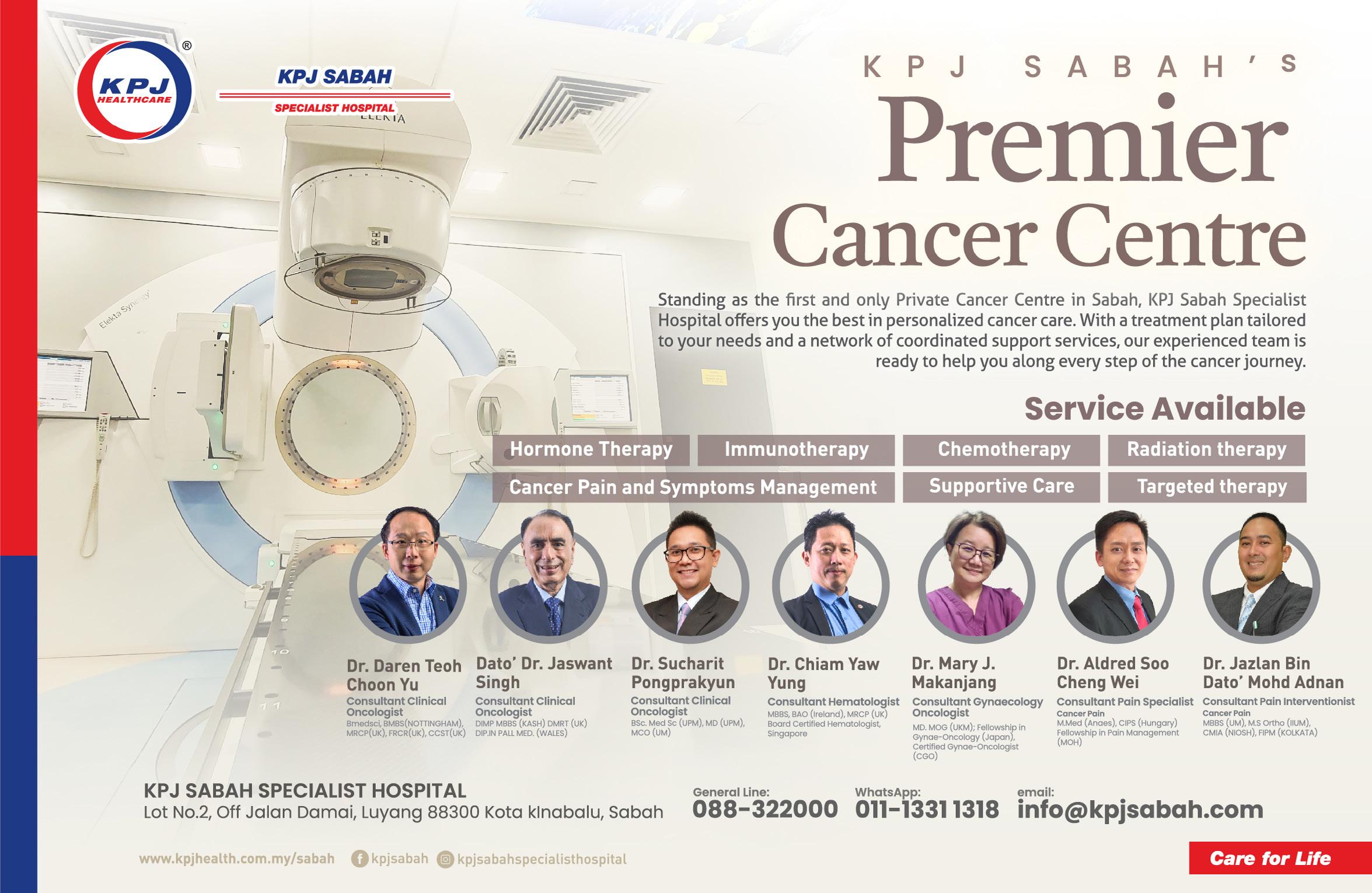

ASIA AWARDS
Healthcare Asia Awards 2023 recognises top industry players
Healthcare providers need to constantly innovate and reinvent, especially now as the world begins recovering from the COVID-19 pandemic. The past years have proven the industry’s resilience as well as its capability to better serve patients and protect employees despite challenges.
The healthcare companies that stand out are those who were able to provide quality care to patients and make significant strides in the industry whilst navigating these challenges.
In recognition of these healthcare companies, Healthcare Asia is proud to introduce the winners of its awards programmes–Healthcare Asia Awards, Healthcare Asia Pharma Awards, and
HEALTHCAREASIAAWARDS 2023
Aakash Healthcare Private Limited
• Management Innovation of the Year - India
• Employee Engagement of the Year - India
Aga Khan University
• Diagnostics Provider of the Year - Pakistan
Al Futtaim Health
• Primary Care Provider of the Year - UAE
• Patient Safety Initiative of the Year - UAE
Aldara Hospital and Medical Center
• Health and Wellness Initiative of the Year - Saudi Arabia
Ara Damansara Medical Centre
• Vaccination Delivery of the Year - Malaysia
Asia Royal Hospital
• Stroke Care Management Initiative of the Year - Myanmar
Asian Hospital and Medical Center
• Clinical Service Initiative of the Year - Philippines
• Patient Care Initiative of the Year - Philippines
Borneo Medical Centre (miri)
• Public-Private Healthcare Partnership of the Year - Malaysia
Buch International Hospital
• Hospital of the Year - Pakistan
Bukit Tinggi Medical Centre
• Most Improved Community Hospital of the Year - Malaysia
China Medical University Hospital, Taiwan
• Smart Hospital Initiative of the Year - Taiwan
City International Hospital
• Most Improved Community Hospital of the Year - Vietnam
Cleveland Clinic Abu Dhabi
• Hospital of the Year - UAE
Dar Al Shifa Hospital
• Hospital of the Year - Kuwait

Healthcare Asia Medtech Awards 2023–through its awards dinner on March 29 at Shangri-la Hotel Singapore. Almost 300 senior executives from outstanding hospitals, clinics, medtech, pharma, and healthcare providers attended the event to celebrate their success as part of the leading companies in the healthcare industry.
This year’s entries were judged by an elite panel of experts in the healthcare industry consisting of Chris Hardesty, Pureland Venture Partner; Abhay Bangi, Ernst & Young Partner; Dr Stephanie Allen, Deloitte Global & Australian Health Leader; Partha Basumatary, Boston Consulting Group Principal; and Guillaume Sachet, KPMG Singapore Head of Healthcare and Life Sciences.
De La Salle Medical and Health Sciences Institute
• Public-Private Healthcare Partnership of the Year - Philippines
Emirates Health Services
• Allied Health Initiative of the Year - UAE
• Clinical Service Initiative of the Year - UAE
Emirates International Hospital
• Health Promotion Initiative of the Year - UAE
Evercare Hospital Lahore
• Technology Innovation of the Year - Pakistan
Femto Research Group Co., Ltd.
• Service Innovation of the Year - Thailand
ForHealth
• Primary Care Provider of the Year - Australia
• Clinical Service Initiative of the Year - Australia
Gc Labs
• Diagnostics Provider of the Year - South Korea
Gia an 115 Hospital Limited Liability Company
• Health and Wellness Initiative of the Year - Vietnam
Gleneagles Hospital Kuala Lumpur
• Service Innovation of the Year - Malaysia
Global Doctors Hospital
• Secondary Hospital of the Year - Malaysia
Institut Jantung Negara
• Technology Innovation of the Year - Malaysia
Kauvery Hospital
• Facilities Improvement Initiative of the Year - India
King Fahad Medical City
• Hospital of the Year - Saudi Arabia
King Fahd Military Medical Complex
• Patient Care Initiative of the Year - Saudi Arabia
• Technology Innovation of the Year - Saudi Arabia
Korea Health Industry Development Institute
• ESG Program of the Year - South Korea
32 HEALTHCARE ASIA
HEALTHCARE
EVENT:

KPJ Johor Specialist Hospital
• Marketing Initiative of the Year - Malaysia
• Patient Safety Initiative of the Year - Malaysia
KPJ Puteri Specialist Hospital
• Management Innovation of the Year - Malaysia
KPJ Sabah Specialist Hospital
• Employee Engagement of the Year - Malaysia
• Health Promotion Initiative of the Year - Malaysia
Kumpulan Medic Iman Sdn Bhd (KMI Healthcare)
• Patient Care Initiative of the Year - Malaysia
• Service Delivery Innovation Initiative of the Year - Malaysia
Mandalar Hospital
• Employee Engagement of the Year - Myanmar
• Facilities Improvement Initiative of the Year - Myanmar
Myat Taw Win Hospital
• Vaccination Delivery of the Year - Myanmar
Mandaya Hospital Group
• Hospital of the Year - Indonesia
Dr. Ben Widaja, Mandaya Hospital Group
• CEO of the Year
Medpark Hospital, Thailand
• Patient Safety Initiative of the Year - Thailand
Mmmhmc - a Whole-system Approach
• Service Delivery Innovation Initiative of the Year - Philippines
Moe Kaung Yadanar Maternal and Child Hospital
• Specialty Hospital of the Year - Myanmar
Naseem Healthcare Llc
• Primary Care Provider of the Year - Qatar
• Home-care Initiative of the Year - Qatar
National Cardiovascular Center Harapan Kita
• Specialty Hospital of the Year - Indonesia
National Kidney and Transplant Institute (NKTI)
• Employee Engagement of the Year - Philippines
P.d. Hinduja Hospital and Mrc
• Service Delivery Innovation Initiative of the Year - India
Prince Court Medical Centre
• Medical Tourism Hospital of the Year - Malaysia
• Clinical Service Initiative of the Year - Malaysia
Principal Capital Public Company Limited (princ Hospital
Suvarnabhumi)
• Secondary Hospital of the Year - Thailand
Quirino Memorial Medical Center
• Facilities Improvement Initiative of the Year - Philippines
• Health and Wellness Initiative of the Year - Philippines
Redcliffe Labs
• Diagnostics Provider of the Year - India
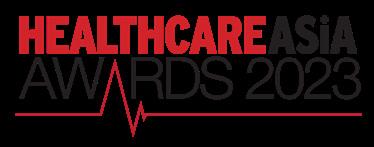
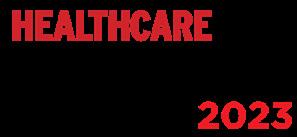

Regency Specialist Hospital
• Specialty Hospital of the Year - Malaysia
Royal Bahrain Hospital
• Mid-sized Hospital of the Year - Bahrain
• Patient Safety Initiative of the Year - Bahrain
Saigon Eyes Hospital
• Specialty Hospital of the Year - Vietnam
Samitivej Sukhumvit Hospital
• Clinical Service Initiative of the Year - Thailand
Security Forces Hospital Mecca
• Preventive Care Initiative of the Year - Saudi Arabia
Shalamar Hospital
• Clinical Service Initiative of the Year - Pakistan
Shinagawa Lasik and Aesthetics Center Corporation
• Specialty Clinic of the Year - Philippines
Singapore Diagnostics
• Diagnostics Provider of the Year - Philippines
Siti Healthcare Sdn Bhd
• Primary Care Provider of the Year - Malaysia
Sri Kota Specialist Medical Centre
• Facilities Improvement Initiative of the Year - Malaysia
St. Luke’s Medical Center - Quezon City
• Health Promotion Initiative of the Year - Philippines
Sunway TCM
• Health and Wellness Initiative of the Year - Malaysia
Sunway Fertility Centre
• Customer Service Initiative of the Year - Malaysia
Sunway Medical Centre Sdn. Bhd.
• Hospital of the Year - Malaysia
Sunway Medical Centre Velocity
• ESG Program of the Year - Malaysia
The Medical City Clinic
• Primary Care Provider of the Year - Philippines
The Medical City
• Marketing Initiative of the Year - Philippines
• Hospital of the Year - Philippines
The Medical City South Luzon
• ESG Program of the Year - Philippines
Thomson Hospital Kota Damansara
• Allied Health Initiative of the Year - Malaysia
Thonburi Sermrath Co., Ltd.
• Patient Care Initiative of the Year - Thailand
UM Specialist Centre (UMSC)
• Quaternary Hospital of the Year - Malaysia
HEALTHCARE ASIA 33

EVENT: HEALTHCARE ASIA AWARDS
VRP Medical Center
• Management Innovation of the Year - Philippines
Vejthani Hospital
• Hospital of the Year - Thailand
WQ Park Health & Rehabilitation Centre
• Rehabilitation Initiative of the Year - Malaysia
Yashoda Hospitals
• Hospital of the Year - India
HEALTHCAREASIA MEDTECHAWARDS 2023
Abbott Diabetes Care
• Marketing & Communications Initiative of the Year - Australia
• Most Differentiated Service of the Year - China
Airdoc Technology Co. Ltd.
• Initiative Award - China
ANSELL
• Medical Product Innovation Award - Malaysia
BioMark
• Digital Innovation of the Year - Singapore
• Patient Support Initiative of the Year - Singapore embecta
• Digital Innovation of the Year - Japan
FPT Software
• Digital Innovation of the Year - Vietnam
• Initiative Award - Vietnam
Guardant Health AMEA
• Oncology Product Innovation of the Year
Hangzhou Singclean Medical Products Co., Ltd.
• Health & Wellness Initiative of the Year - China
IHH Healthcare
• Health App of the Year - Singapore
Johnson & Johnson Vision
• Ophthalmology Product Innovation of the Year
Medtronic Philippines Inc
• Patient Advocacy Program of the Year - Philippines
• Hospital Partnership of the Year - Philippines
PENTAX Medical Singapore Pte Ltd
• Endoscopy Product Innovation of the Year
Zimmer Biomet
• Orthopaedic Product Innovation of the Year
HEALTHCAREASIA PHARMAAWARDS 2023
Celltrion Healthcare Thailand
• Patient Advocacy Program of the Year - Thailand
Novo Nordisk Pharma (Taiwan) Ltd.
• ESG Program of the Year - Taiwan
Scientimed Solutions Pvt Ltd
• Marketing & Communications Initiative of the Year - India
Dr Reddy’s Laboratories
• Marketing & Communications Initiative of the Year - India
ZP Therapeutics
• Most Differentiated Service of the Year - Singapore
• Outcomes-based Contracting Model of the Year - Singapore



34 HEALTHCARE ASIA
Ara Damansara Medical Centre
Asia Royal Hospital
Borneo Medical Centre (miri)



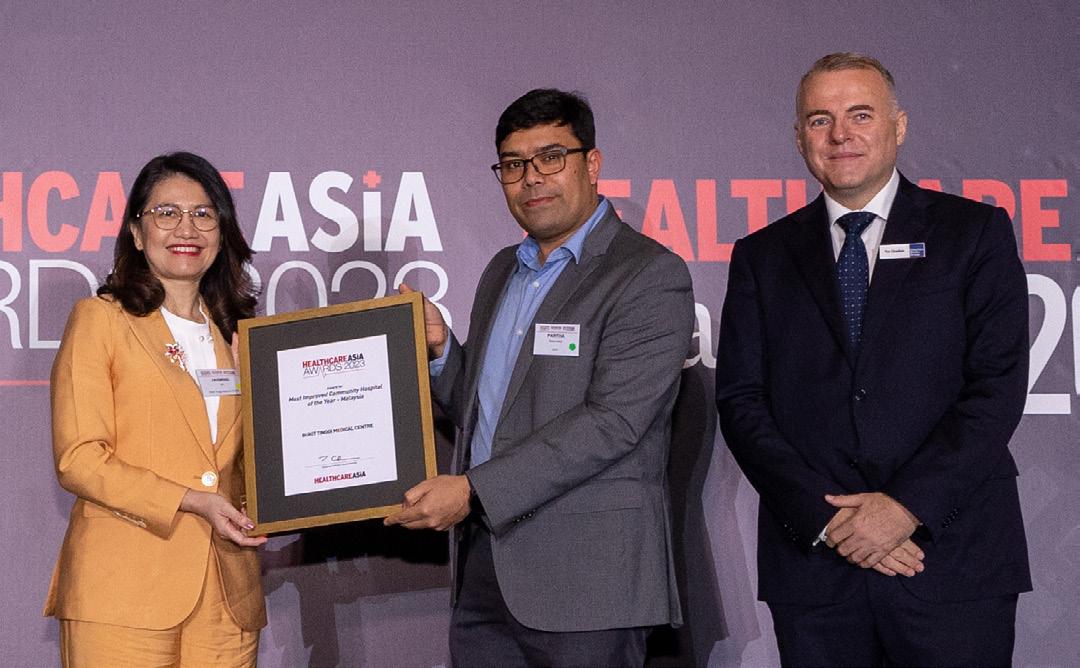


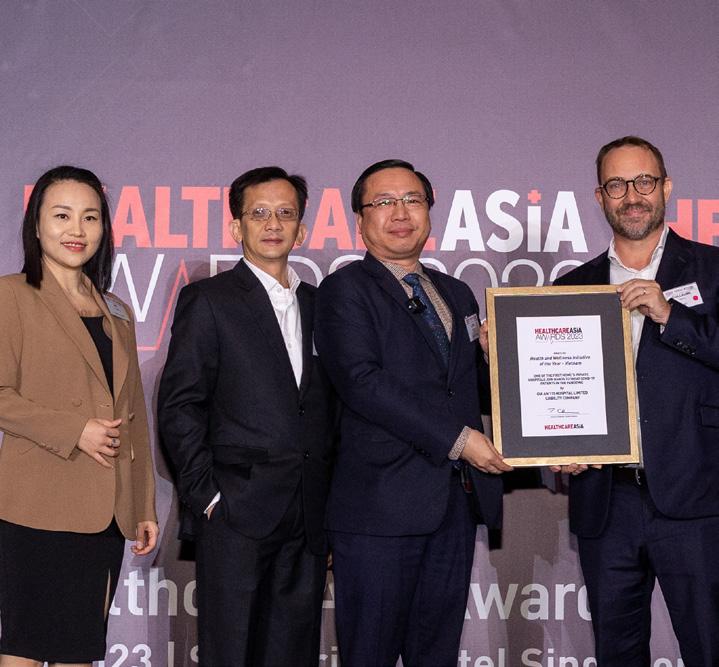
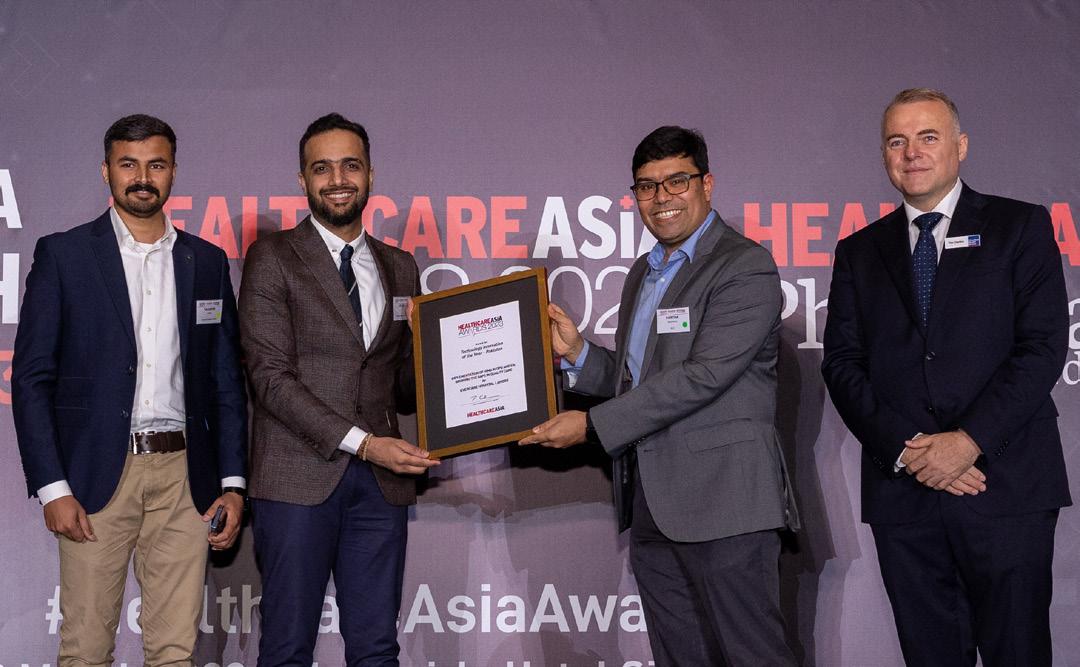



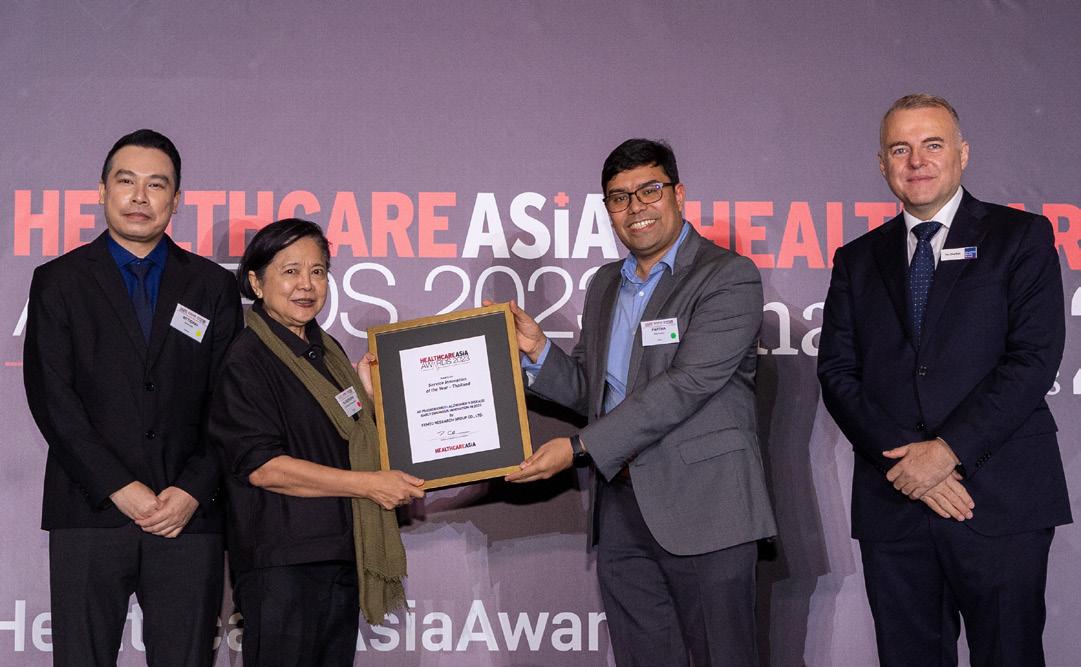
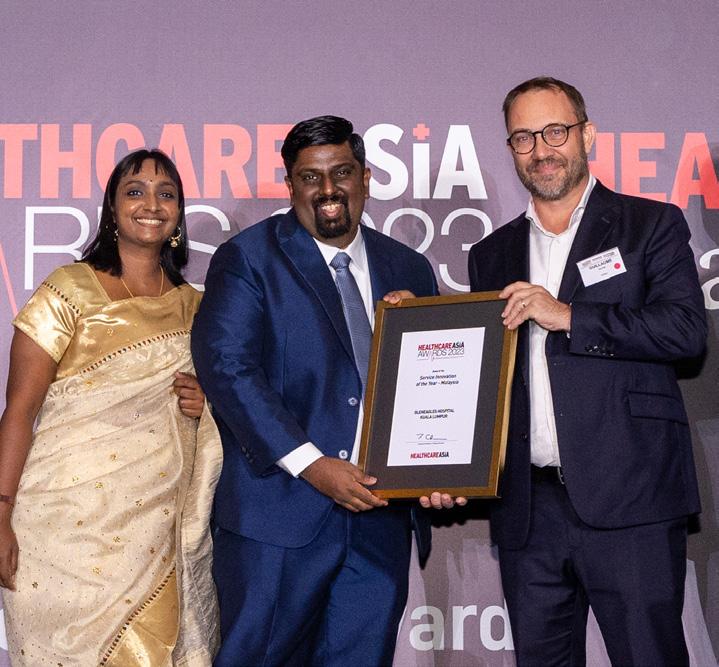

HEALTHCARE ASIA 35
Bukit Tinggi Medical Centre
City International Hospital
Evercare Hospital Lahore
Forhealth
GLENEAGLES HOSPITAL KUALA LUMPUR
Korea Health Industry Development Institute
Femto Research Group Co.,ltd.
Gia An 115 Hospital Limited Liability Company
De La Salle Medical and Health Sciences Institute
China Medical University Hospital, Taichung, Taiwan

EVENT: HEALTHCARE ASIA AWARDS









36 HEALTHCARE ASIA
Kumpulan Medic Iman Sdn Bhd (KMI Healthcare)
Mandaya Hospital Group
National Kidney and Transplant Institute
Prince Court Medical Centre
Principal Capital Public Company Limited (princ Hospital Suvarnabhumi)
Naseem Healthcare Llc
National Cardiovascular Center, Harapan Kita Hospital
Moe Kaung Yadanar Maternal and Child Hospital
Mandalar Hospital




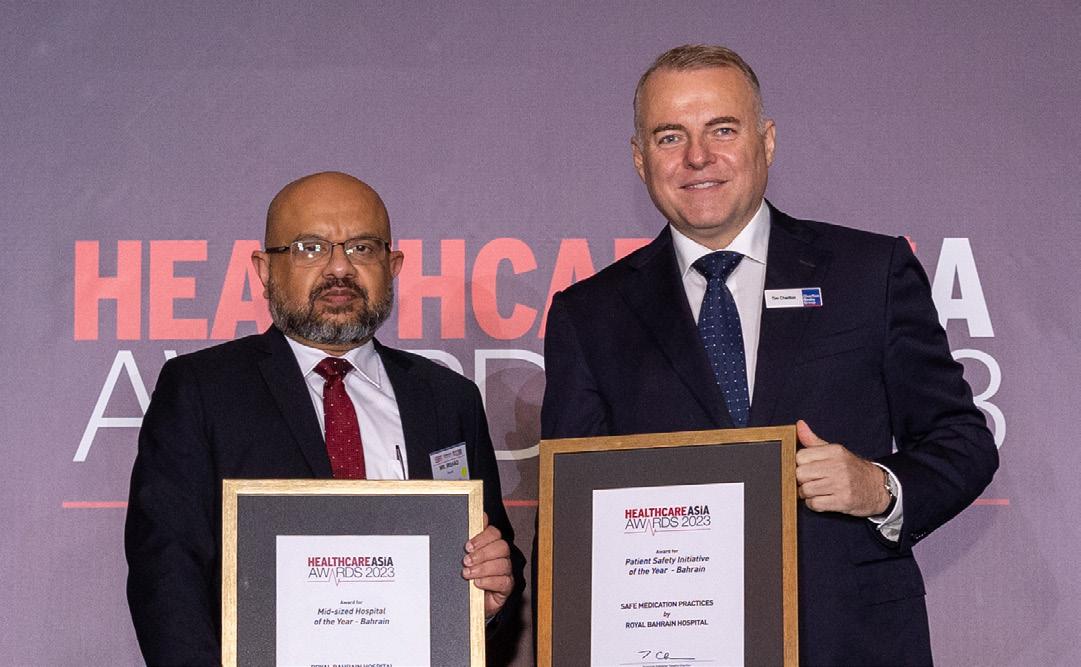





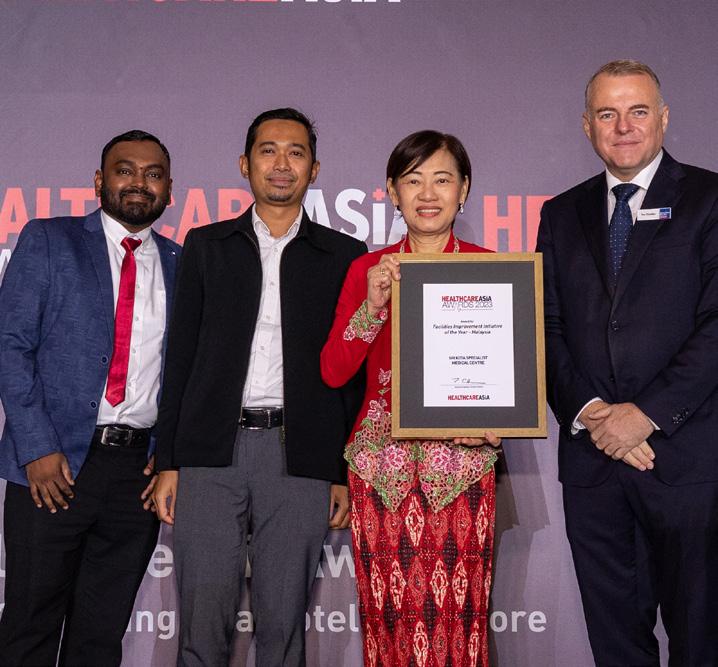



HEALTHCARE ASIA 37
Regency Specialist Hospital
Samitivej Sukhumvit Hospital Under Samitivej Public Company Limited
Sunmed@home Sdn Bhd
The Medical City Clinic
The Medical City South Luzon
Thomson Hospital Kota Damansara
The Medical City
Singapore Diagnostics
Sri Kota Specialist Medical Centre
Royal Bahrain Hospital

EVENT: HEALTHCARE ASIA AWARDS









38 HEALTHCARE ASIA
Thonburi Sermrath Co.,Ltd
UM Specialist Centre
WQ Park Health & Rehabilitation Centre
Scientimed Solutions Pvt Ltd
ZP Therapeutics
Celltrion Healthcare Thailand
Novo Nordisk Pharma (Taiwan) Ltd.
Vejthani Hospital
VRP Medical Center



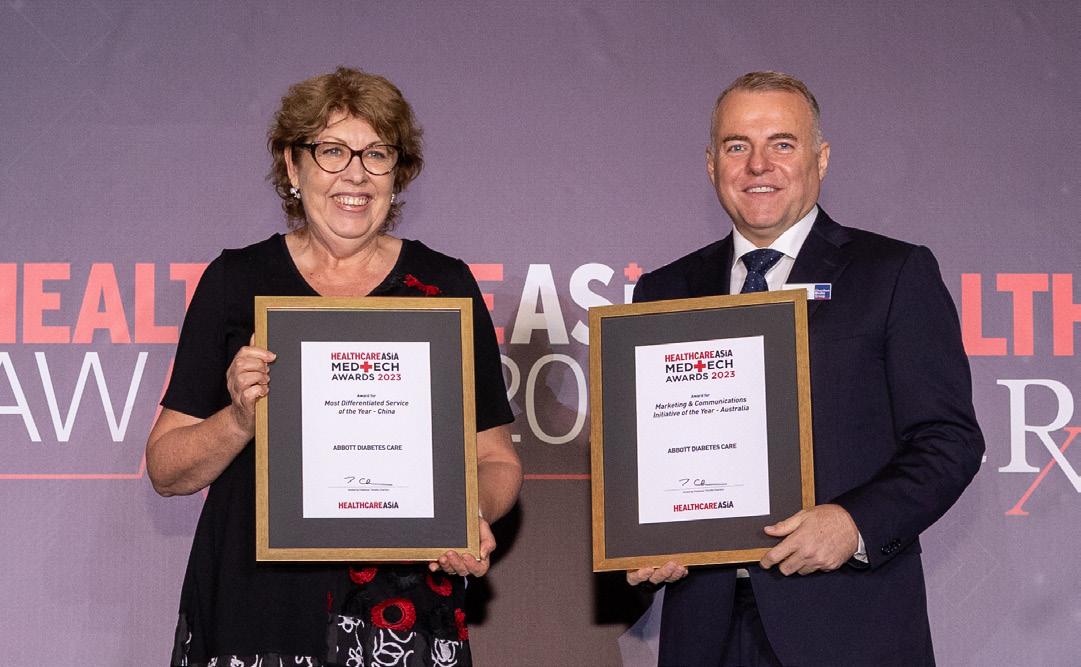










HEALTHCARE ASIA 39
Abbott Diabetes Care
embecta
Hangzhou Singclean Medical Products Co., Ltd.
PENTAX Medical Singapore Pte Ltd
Zimmer Biomet Saigon Eye Hospital
Medtronic Philippines Inc.
Guardant Health AMEA
Johnson & Johnson Vision
ANSELL
Providing Sustainable Healthy Community for the Associates of the Ministry of Defense
and their families.
KING FAHD MILITARY MEDICAL COMPLEX
Wins Technology Innovation of the Year award at Healthcare Asia Award
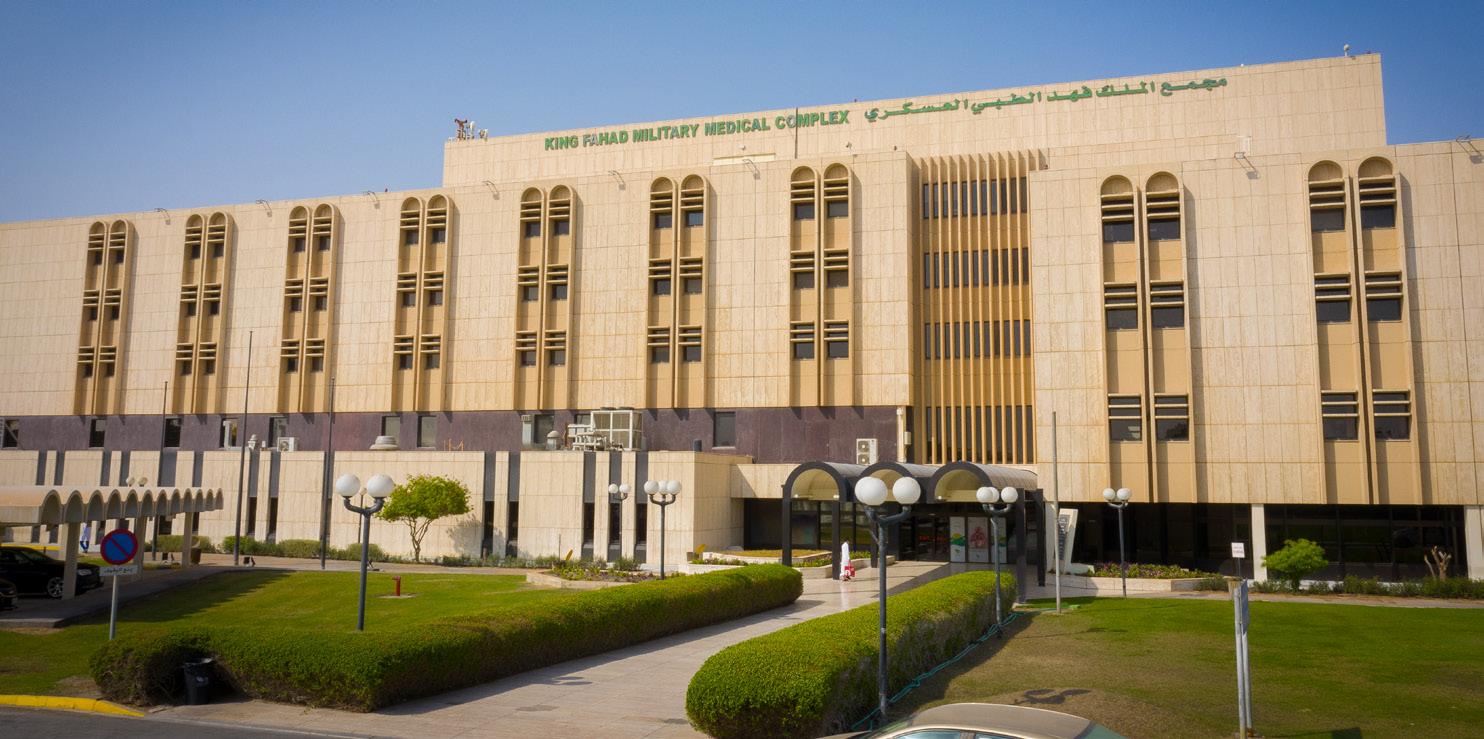
The medical institution won for the implementation of its order set that aims to reduce medication order entry errors.
Medication errors pose a significant risk to a patient’s well-being, with the potential for severe physical harm and even fatality. These preventable mistakes not only affect patients but also burden healthcare providers and organisations with financial, psychological, and emotional stress. Whilst these types of errors have been reduced to an extent, thanks to Computerised Physician Order Entry (CPOE) systems, there remains a need to improve the prescribing process. This challenge was faced by King Fahd Military Medical Complex during its pharmacy management team’s review of medication prescription interventions back in 2018. The analytics of hospital information showed a good chunk of interventions performed by the pharmacists which was a resource-consuming and time-consuming process thus can lead to delays in patient care. Inadequate knowledge or competence and incomplete information about clinical characteristics and previous treatment of individual patients can result in prescribing faults, including the use of potentially
inappropriate medications.
As such, the hospital recognised that there needed to be actions done to improve the process.
One promising approach to this challenge involves utilising predefined order sets based on evidence-based protocols tailored to various patient diseases.
Standardised order sets (SOSs) as clinical decision support tools were built, aimed to help physicians prescribe appropriate treatments using a pre-defined set of applicable drugs and recommended dosages, based on evidence-based guidelines for a specific disease area.
An order set was implemented which
allowed physicians to place orders with a few keystrokes or mouse clicks thus decreasing the time physicians required to enter orders.
Given this project, the organisation demonstrated its commitment to improving health through effective use of information and technology. King Fahd Military Medical Complex’s desire to be a data-driven organisation highlights its commitment to improving care quality, safety and efficiency. Likewise, King Fahd Military Medical Complex enhanced patient experience with hourly rounding and evidence-based practice outcome measures. Additionally, it improved quality of patient care and safety by controlling laboratory and bioscientia test ordering.
It is for these achievements that King Fahd Military Medical Complex was given the Technology Innovation of the Year award at the Healthcare Asia Awards 2023.
The awards programme aims to honour hospitals, clinics and other healthcare providers that have risen above the challenges and made a remarkable impact on their patients, most especially amidst the massive disruption caused by the COVID-19 pandemic.

40 HEALTHCARE ASIA
King Fahd Military Medical Complex has Awarded for Technology Innovation of the year during the Healthcare Asia Awards held in Singapore

King Fahd Military Medical Complex Wins Technology Innovation of the Year award at Healthcare Asia Award
LABORATORY

Hospital Accreditation Bodies




One of the Tertiary Hospital Eastern Region, Saudi Arabia
KING FAHD MILITARY MEDICAL COMPLEX
HOSPITAL SERVICES


HEMODIALYSIS

Promoting Healthy Life Style for the personnel of Ministry of Defense and their families
MILITARY HOSPITAL IN SAUDI ARABIA
SURGERY CARDIOLOGY
ACCIDENT & EMERGENCY
SPECIALITY CLINICS
HEALTHCARE ASIA 41

Beyond expectations: Prince Court Medical Centre elevates healthcare standards
Offering a gold standard in holistic healthcare since 2007, this distinguished institution boasts over 160 expert consultants, delivering personalised care across a wide spectrum of medical specialties.

Prince Court Medical Centre is a premier tertiary hospital that is strategically situated in the heart of Kuala Lumpur. Since its launch in 2007, the hospital has continued to ascend to prominence for its gold standard in providing holistic healthcare.
The medical centre delivers multi-specialty personalised care, with over 160 consultants offering medical solutions and treatments from head to toe.
Whether confronted with complex medical conditions or routine health matters, Prince Court’s team of specialists from diverse medical fields works collaboratively to develop personalised treatment plans for all patients.
Over the years, the hospital has expanded its services and facilities to cater to the growing needs of patients whilst investing in cutting-edge medical technology, ensuring the most advanced diagnostic and treatment options available.
Prince Court CEO Cindy Choe expressed her commitment to continuous investment in innovation and technological advancements that ensure exceptional quality care.
“We pride ourselves on our transformative approach towards accessible and equitable healthcare through patient-focused diagnostics and medical solutions. Our renowned ability to provide clinical excellence and world-class service ensures value-for-money to all who walk through our doors, making Prince Court the preferred choice of patients in Asia,” said Choe.
Prince Court offers an extensive range of services, including a comprehensive cancer centre, orthopaedic and sports medicine, 24/7 emergency services, round-the-clock stroke management, colorectal surgery, ENT, nephrology, vascular surgery, as well as intricate procedures such as bone marrow transplants, cochlear implants, corneal transplants, and kidney transplants.
Most notably, they have achieved remarkable success in completing over 100 kidney transplants, even in ABO-
incompatible cases.
In addition to these areas of specialisation, the medical centre provides care in breast and endocrine treatment, heart and lung services, neurology and neurosurgery, and a dedicated burns unit.
From a patient’s perspective, Prince Court optimises the quality of care whilst ensuring cost-effectiveness by focusing on value-driven outcomes for patients.
With an unwavering commitment to patient well-being, Prince Court has created a compassionate environment that complements its remarkable medical care and cutting-edge facilities.
This noteworthy blend has made it a preferred destination for patients in Asia, reinforcing its position as a flagship, multidisciplinary hospital that is trusted, exclusive, and world-class.
We pride ourselves on our transformative approach towards accessible and equitable healthcare through patient-focused diagnostics and medical solution
42 HEALTHCARE ASIA MEDICAL TOURISM HOSPITAL OF THE YEAR - MALAYSIA
Prince Court CEO Cindy Choe

World-Class Healthcare. Right Here.
PROVIDING YOU WITH THE ULTIMATE HOSPITAL EXPERIENCE
All-Bedded Dialysis Centre
Dedicated Burns Unit
Dedicated Headache clinic
State-of-the-art Aqua Rehab and Hydrotherapy Pool
Weight-Bearing CT Scan
1st private hospital to perform renal transplants in Malaysia, including blood group incompatible transplants
1st and only private hospital to perform >100 kidney transplants
OUR CLINICAL & SURGICAL SERVICES
COMPREHENSIVE SERVICES
• Robotic-Assisted Surgery
> da Vinci Xi Surgical System
• 24/7 Emergency Services (including Heart, Stroke, Orthopaedic & Trauma)
• 24/7 Stroke Management Services
• Colorectal Surgery
• Dentistry & Maxillofacial Surgery
• Dermatology
• Ear, Nose & Throat (ENT)
• Eye & LASIK
• Gastroenterology & Internal Medicine
• Health Screening
• Lifestyle Modi cation (Dietetics & Nutrition)
• Nephrology
• Occupational & Travel Medicine
• Palliative Medicine
• Pain Management
• Pathology
• Psychiatry
• Radiology & Nuclear Medicine
• Rheumatology
• Vascular Surgery
NICHE SERVICES
• Bone Marrow Transplants
• Cochlear Implants
• Corneal Transplants
• Intraoperative Radiation Therapy (IORT)
• Kidney Transplants
• Physical & Rehabilitation:
> Hydrotherapy Pool
> Lokomat Pro (Ver. 6.0)
KEY SPECIALTIES
• Oncology
• Orthopaedic, Sports Medicine, Hand & Microsurgery
• Neurology & Neurosurgery
• Heart & Lung
• Men’s Health
• Women & Children
• Breast & Endocrine
• Plastic Reconstructive & Burns Unit
• Surgical Specialities (minimally invasive surgeries)
HEALTHCARE ASIA 43

HealthHub Clinics: Award-winning healthcare for healthier outcomes
The primary care chain of clinics from Al-Futtaim continues to raise the level of excellence in patient-centric healthcare.

You can instantly tell what HealthHub Clinics, the healthcare division of the Al-Futtaim Group, one of the biggest conglomerates in the Middle East stands for: the ’wheel of colour’ that symbolises all-round specialities embracing every aspect of healthcare. By seamlessly integrating technology with professional medical services and expertise, the chain of clinics continues to redefine the patient experience by delivering high-quality, smart and integrated care, whilst conforming to the use of best practices that safeguard patient safety.
It might be recalled that the healthcare provider had already received a gold accreditation for nine of its clinics in 2021, a platinum accreditation for 3 of its clinics and its telehealth services recognising its patient safety and high-quality healthcare services. Like the wheel constantly turning towards its journey of excellence, the healthcare brand has also added recognition in the categories of UAE’s Primary Care Provider of the Year Award and the UAE’s Patient Safety Initiative of the Year Award at the 2023 Healthcare Asia Awards.
Top Healthcare Provider
Earning the distinction of the ‘UAE’s Primary Care Provider of the Year’, is a reflection of its facilities and competencies, covering areas that include Medication Management, Perioperative Services and Invasive Procedures, and Infection Prevention and Control Standards Leadership, all of which underwent meticulous inspection by Accreditation Canada. It also highlights its distinction in Governance, Dental Services, Diagnostic Imaging, Primary Care Services,

Biomedical Laboratory Services, Service Excellence, and Telemedicine/ Virtual Health. It has been committed to providing the best quality care to its patients by helping the organisation minimise errors in healthcare offerings, ensuring a high standard of quality care and patient safety across all touchpoints, delivering expert services to patients by certified medical staff, and protecting and respecting patients’ rights.
Our Central Lab plays a vital role in ensuring top quality patient care and safety as it works 24/7 ensuring samples are processed in a timely manner. Prompt patient care is then provided based on the reports.
Enhancing Safety Culture
Best practices in patient safety and quality cover key factors such as the diversity of teamwork, multidisciplinary teams, use of best practices, evidence to track the improvement of patient safety, and meaningful engagement of patients and families. The Quality Department conducts regular fire drills,
Hazmat training and drills, Emergency code training and drills etc so that the team on the ground is well prepared for any unanticipated emergencies. Al-Futtaim’s clinical education department has also successfully conducted regular awareness programmes through simulation courses, specialised courses and mock drills relating to patient safety procedures. The annual safety culture survey from AHRQ ensures anonymous feedback is provided on the safety culture of the organisation and the results of this survey are analysed and corrective actions are prepared with leadership involvement.
The Safety Culture at Al-Futtaim Health is assisted by several smart platforms like the incident reporting system and the CIMS drug interaction information platform etc. It's a blame-free culture at Al-Futtaim which means the focus is on correcting the problem rather than on the person making the mistake, enabling staff to report incidents without fear and constantly improve the quality of services, patient satisfaction and safety standards and ultimately staff satisfaction.
By seamlessly integrating technology with professional medical services and expertise, the chain of clinics continues to redefine the patient experience by delivering high-quality, smart and integrated care, whilst conforming to the use of best practices that safeguard patient safety
Specialties offered: Cardiology, Dentistry, Dermatology, Endocrinology, Endodontics, ENT, Family Medicine, General Medicine, General Surgery, Gastroenterology, Internal Medicine, Neurosurgery, Obstetrics & Gynaecology, Ophthalmology, Orthopaedics & sports injuries, Pharmacy, Physiotherapy, Pulmonology, Radiology, Urology, Pharmacy
Clinics & Pharmacies (locations):
44 HEALTHCARE ASIA PRIMARY CARE PROVIDER OF THE YEAR - UAE PATIENT SAFETY INITIATIVE OF THE YEAR - UAE
HealthHub
Al Muteena, Al Nahda, Al Qusais, Arabian Center, Al Warqa, Barsha Heights, Discovery Gardens, Festival City, Festival Plaza, International City, Karama, Dubai Silicon Oasis, Staff Clinic, Station clinics for different corporates and labour camps. Other Facilities: Central Lab
HealthHub Clinics, the healthcare division of the Al-Futtaim Group
Redefining the patient experience with technology

BORNEO MEDICAL CENTRE (MIRI)



Borneo Medical Centre (Miri) is a 100 bedded tertiary care private medical centre. It is a tertiary care private medical centre. It is equipped with modern medical technology as well as a talented and dynamic team of health care professionals; all dedicated to be continued well being of the people.
We aim to deliver high quality medical care to locoregional and international patients, regardless of race, religion or nationality. Located in the central hub of Miri, we care about our patient's well being. We like to think of our patients and their families not only as ''people'' but as ''individuals'', and we believe that the partnership between patient and medical staff is what enables us to deliver the highest possible level of care. About us
Find us on:
www.bmcmiri.com


Vision

To be the leading healthcare provider in Northern Borneo.
Mission
To provide the community with comprehensive, accessible and value driven medical services.
To be state - of - the - art & quality driven medical centre.
To be a place of healing and comfort for loco - regional and international patients, regardless of race, religion or nationality.
Our Core Values
Our core values are embedded in the powerful acronym "TRUST" : Trustworthiness, Respect, Unity, Safety, Timeliness





HEALTHCARE ASIA 45
Lot
Cahaya,
98000
Accredited A member of :
Borneo Medical Centre Miri
1959, Block 10,
MCLD, Jalan
Off Jalan Miri-Bintulu,
Miri Sarawak, Malaysia
Your Your TRUSTED TRUSTED Community Community Healthcare Partner Healthcare Partner
P u b lic -P r iv at e Healt hc ar e Public-Private Healthcare P ar t ner s hip of t he Year - Partnership of the YearMalay s ia Malaysia Please Scan the QR code to chat with us:


Cynosure redefines aesthetic healthcare technology with groundbreaking innovations
The company’s commitment to research and clinical evidence ensures the reliability and consistency of its technologies.
The field of medical aesthetics has witnessed extraordinary advancements in recent years, with Cynosure Aesthetic and Medical APAC Services Pte. Ltd. at the forefront of shaping and driving these cuttingedge technologies.
The renowned company’s dedication to research and development has yielded groundbreaking industry “firsts,” revolutionising clinical outcomes and patient experiences.
Furthermore, Cynosure pioneered picosecond laser technology for aesthetic use with the launch of Picosure, the first 755nm picosecond laser FDA-approved for treating pigmented lesions. More recently, PicoSure® Pro received FDA approval for treating melasma pigment, further cementing Cynosure’s position as a true industry trailblazer.
Cynosure’s contributions to the industry have been recognised in prestigious award programmes, including the SBR Technology Excellence Awards and the SBR International Business Awards, where it took home the Machine - Healthcare Technology and Healthcare Technology wins, respectively.
Precision and reliability to ensure optimal treatment
results
In the realm of medical and aesthetic procedures, precision and accuracy are paramount. Cynosure ensures the reliability and consistency of its technologies by placing a strong emphasis on research and clinical outcomes. Cynosure’s technology has been proven effective time and again. The Picosure®, for instance, boasts more than 117 papers and over 1 million successful treatments around the world, underscoring its reliability and effectiveness.
Amidst a dynamic and competitive industry landscape, Cynosure thrives by fostering a culture of innovation. By closely collaborating with practitioners and medical experts, the company gains crucial insights into ever-evolving trends in treatment and patient expectations. “As our valued partners, we work hand in hand with them to improve patient outcomes, delivering a patient-first approach,” Bebe Teo, Cynosure’s SVP of Asia Pacific and Commercial Excellence, explained. Meanwhile, Cynosure’s Prestige and Signature partnership programme focuses on personalising patient

experiences. This is whilst the company continues to innovate through its EDB technology solutions to help clinics stay at the forefront of industry developments.
Empowering lives and unlocking confidence
As a global leader in aesthetic energy-based devices, Cynosure’s technologies have left an impact on patients, practitioners, and industries worldwide. Beyond visibly improving skin quality, tone, and texture, the transformative power of Cynosure’s technology lies in its ability to boost patients’ self-confidence and mental well-being.
Bebe highlighted the case of Dr Teppei Sakai in Japan, where a patient suffered from depression due to pronounced pigmentation on the face. The patient experienced not just a physical transformation but also a change in mental state after a series of Picosure treatments that cleared the pigmentation. Witnessing such uplifting success stories drives Cynosure to unlock more treatments and continuously innovate. “This is why, at Cynosure, we believe our technology has the potential to help unlock beautiful energy within everyone by working at a level that goes beyond just skin,” Bebe said.
Looking ahead, Cynosure remains committed to pushing the boundaries of medical aesthetics. Collaboration with practitioners, active feedback collection from
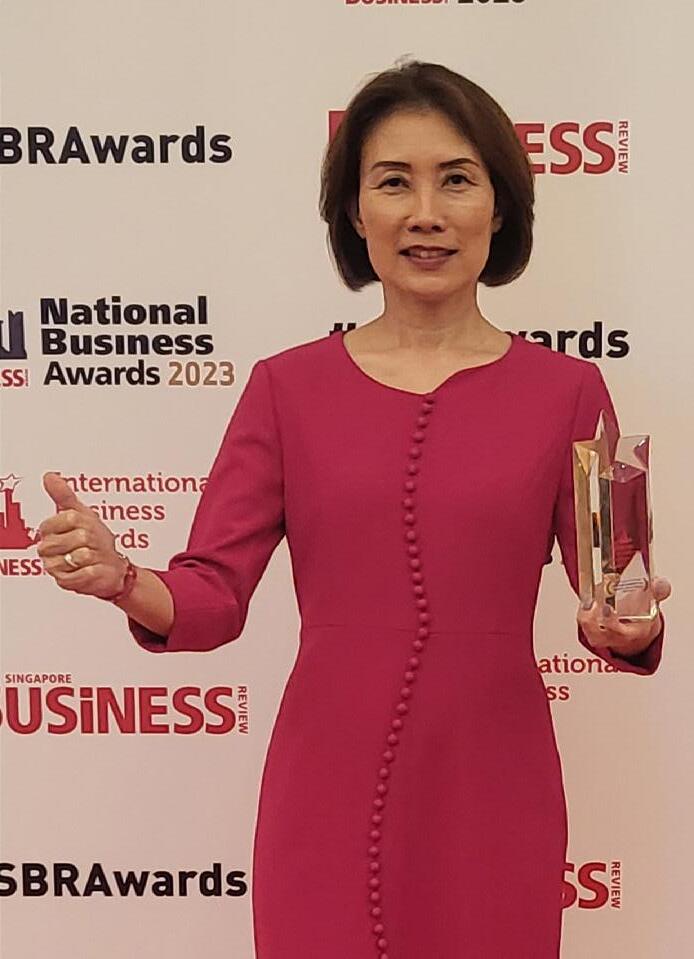
medical professionals and their patients, and an unwavering focus on patient needs are factors that form the bedrock of the company’s future endeavours.
“We are always interested to learn how our customers are using Cynosure and other technology, what they like or dislike, and importantly, what their patients are asking for and prefer,” notes Nadav Tomer, the CEO of Cynosure.
As patients embrace their post-pandemic freedom, the demand for non-invasive treatments with minimal downtime is growing. Cynosure’s upcoming projects and innovations will cater to this need, aiming to provide practitioners and their clinics with faster yet equally safe and effective treatments.
Cynosure’s spirit and commitment to innovation have propelled it to the forefront of the medical aesthetics industry. With a legacy of “firsts” and a global impact on many patients’ lives, Cynosure continues to illuminate the path towards a more confident and beautiful future for everyone.
We are always interested to learn how our customers are using Cynosure and other technology, what they like or dislike, and importantly, what their patients are asking for and prefer
46 HEALTHCARE ASIA MACHINE - HEALTHCARE TECHNOLOGY HEALTHCARE TECHNOLOGY
Bebe Teo, SVP of Asia Pacific and Commercial Excellence
2023
Nadav Tomer, CEO of Cynosure





HEALTHCARE ASIA 47

The Medical City Clinic’s core in building trust, delivering quality amidst challenging times
TMC Clinic’s recognition as Primary Care Provider of the Year fuels its mission as a trusted leader in ambulatory healthcare.

The healthcare industry faced one of the most challenging adversities when COVID-19 struck and became the most feared disease in 2020. This resulted in nonCOVID patients relying on self-care and postponing treatment to avoid contracting this deadly virus.
One of The Medical City Clinic’s (TMC Clinic’s) strategic moves was to develop an effective infrastructure for communications on top of standardising a safe space in the clinics. Teleconsultations and a contact centre were quickly set up to become an alternative channel for consultations and a reliable source of any clinic-related information. Shortly after, a chatbot system capable of conversing in Filipino and Cebuano languages was developed, making communication and online interactions accessible and relatable.
TMC Clinic implemented and enforced the setup of the air exchange systems to address the study showing that COVID-19 can spread through droplets via airborne particles. Fifty-seven clinics were equipped with cutting-edge air safety and purification technologies to reduce anxiety. Patient concerns were addressed, medical professionals were able to safely conduct their practice, and TMC Clinic employees
were able to work with peace of mind. TMC Clinic patients were safe, and the employees remained focused and engaged.
TMC Clinic values its heroic medical professionals and all non-medical workforce colleagues, and collectively came together for the community and the organisation.
Last December 2022, TMC Clinic also received the distinction of being a Great PlacetoWorkCertifiedorganisation, widely regarded as the Gold Standard for great workplace cultures worldwide.
TMC Clinic also introduced Tim CeeCee, your Partner in health, who is spreading
good vibes and positive energy. Tim, a corgi, is the organisation’s newest member. Tim is a testament to how the organisation is continuously working to evolve. He brings a warm and approachable image to the organisation despite having experienced the most challenging of times.
Being recognised as the Primary Care Provider of the Year in the Philippines by Healthcare Asia and being certified as a Great Place to Work, TMC Clinic continues to expand and pushes boundaries to remain true to its vision — to lead as the most trusted Partner in ambulatory healthcare.

Patient concerns were addressed, medical professionals were able to safely conduct their practice, and TMC Clinic employees were able to work with peace of mind
48 HEALTHCARE ASIA PRIMARY CARE PROVIDER OF THE YEAR - PHILIPPINES
TMC Clinic staff with the institution’s partner in health Tim CeeCee

Singclean: Pioneering Absorbable Biomaterials and Corporate Citizenship
Healthcare Asia Medtech Award applauds Singclean’s contributions to pandemic relief and dedication to healthcare innovation.

Being a Better Corporate Citizen
Singclean, a prominent player in the Chinese absorbable biomaterials industry, has been honoured with the prestigious Healthcare Asia Medtech Award for its Health & Wellness Initiative. This recognition is a testament to its significant contributions to curbing the COVID-19 outbreak during the pandemic. The company’s efforts included donating face masks to hospitals and slums in Bangkok, providing medical necessities to hard-hit areas in China, and supplying COVID-19 test kits to Thailand. These endeavours were crucial in addressing the severe shortages of healthcare supplies, particularly COVID-19 test kits, in the Asia-Pacific region.
Since its establishment in 2002, Singclean has remained dedicated to being a better corporate citizen by engaging in various corporate citizenship activities each year. These activities range from making donations to rural primary schools to visiting elderly residents in neighbourhoods and sending gifts to sanitation workers.
Dedication to Global Healthcare Improvement
Not only has the company played a crucial role in giving back to the community, but it has also demonstrated an unwavering commitment to improving global healthcare.
Over the past 20 years, Singclean has diligently worked its way to become one of the key players in the Chinese absorbable biomaterials industry. Its product range, consisting of 8 series with 50 varieties, including medical sodium hyaluronate gel products, cross-linked sodium hyaluronate gel products, microporous polysaccharide products, oxidised regenerated cellulose products, in vitro diagnostic reagent products, chitosan products, collagen sponge, and regenerative medicine engineering basic material products, is now used by doctors and patients in more than
60 countries worldwide, including Italy, Germany, Turkey, Thailand, Brazil, and Chile. Singclean is firmly aimed at becoming the industry leader and pioneer. Surgiclean® MPH Absorbable Hemostatic Particles, independently developed by Singclean, successfully filled the gap in hemostatic product development using starch as raw material in China, breaking the monopoly.
Singderm®, a monophasic hyaluronic acid dermal filler with lidocaine, is the result of six years of dedicated research and development by Singclean. It incorporates SingLink® unique patented cross-linking technology and has earned the honours of “China Hyaluronic Acid Filler Innovative Brand” and “China’s Most Loved Hyaluronic Acid Filler Brand.” This revolutionary product has gained popularity in over 40 countries and regions.
Excelling
in Every Endeavor
Singclean boasts a robust research and development team comprising more than 50 experienced engineers, with over half of the team holding doctoral and master’s degrees. Additionally, the company has collaborated with superior universities, hospitals, and laboratories worldwide, facilitating the transformation of technology into practical products. This blend of academic excellence and practical experience ensures that Singclean remains at the forefront of innovation, offering cutting-edge solutions to industry challenges.
Singclean Medical undergoes and passes more than 10 unannounced foreign and domestic inspections each year. The attainment of multiple Quality Management System Certifications, such as MDR, MDSAP, BGMP, and KGMP, serves as a powerful
testament to the international recognition of Singclean’s high standard of product quality.
Spanning 28,000 square meters, Singclean’s international manufacturing base now includes a new facility covering over 20,000m2, with an investment of more than $15m, which is set to be operational starting October. This expansion aims to significantly increase production capacity at a growth rate of 300%.
Driving Progress in Global Health
Over the past year, Singclean has actively participated in more than 10 professional medical products exhibitions, including MEDICA, Arab Health, and AMWC. This year, the number of exhibitions has increased to 20. To strengthen its presence in key regions, Singclean has established a European office in the Netherlands and an Asian office in Vietnam. Additionally, the company plans to set up more overseas offices as part of its continued growth strategy to better understand local markets and solidify its position as a leading player in the industry.
Singclean remains steadfast in its commitment to becoming the leading manufacturer of absorbable biomaterials in China. The company aims to establish a comprehensive platform for sharing technology, resources, and talent in the absorbable biomaterials industry. Singclean has already opened its talent and scientific research resources to start-up companies, supporting their growth through R&D assistance. By collaborating with industry peers, Singclean’s goal is to drive progress and innovation worldwide, ultimately contributing to the improvement of global health.

Singclean remains steadfast in its commitment to becoming the leading manufacturer of absorbable biomaterials in China
HEALTHCARE ASIA 49
HEALTH & WELLNESS INITIATIVE OF THE YEAR - CHINA

Simplifying Presbyopia Correction1-9 The First-of-its-kind presbyopia-correcting IOL with wavefront-shaping technology and a clinically proven monofocal visual disturbances profile 1-4 References: 1. AcrySof® IQ Vivity® Extended Vision IOL Directions for Use. 2. Alcon Data on File, US Patent 9968440 B2, May 15, 2018. 3. Alcon Data on File, TDOC-0055575. 09 Apr 2019. 4. Alcon Data on File. TDOC-0055576. 23-Jul-2019. 5. Alcon Data on File, TDOC-0056718. 18-Jun-2019. 6. Ligabue E, et al. ACRYSOF IQ VIVITY: Natural vision at a range of distances provided by a novel optical technology. Cataract & Refractive Surgery Today. April 2020 // 7. Alcon Data on file. A02062-REP-043696, Optical Evaluations of Alcon Vivity®, Symfony*, Zeiss* AT LARA* AT LISA IOLs. Feb 2020. 8. Lawless M. Insight news. “An IOL to change the cataract surgery paradigm?” available at “https://www.insightnews.com.au/an-iol-to-change-the-cataract-surgeryparadigm/”. Accessed Date 17.07.2020. 9. Ike K. Ahmed, et al. The Vivity Extended Depth of Focus IOL: Our Clinical Experience. Cataract & Refractive Surgery Today. February 2021// Please refer to product direction for use for complete list of indications, contraindications and warnings. © 2021 Alcon Inc. 8/21 ASIA-VIV-2100019 AcrySof IQ Vivity® IOL
PRINC HOSPITAL SUVARNABHUMI
THAILAND
PRINC Hospital Suvanabhumi : Leading the Way Healthcare

PRINC Hospital Suvanabhumi, a part of the renowned Principal Healthcare group, stands as a key player in the medical landscape, currently comprising a network of 14 hospitals. As a secondary-level hospital, PRINC is ambitiously striving towards becoming a full-fledged tertiary facility.
Driven by a steadfast purpose, PRINC Hospital is committed to delivering exceptional healthcare services to its patients. This dedication to their mission has earned them prestigious accreditations, including recognition from the Joint Commission International (JCI), Global Healthcare Accreditation (GHA), and HIMSS EMRAM stage 6.
Amidst the challenges posed by the COVID-19 pandemic, PRINC Hospital demonstrated unwavering resilience. The hospital allocated extensive
resources to combat the crisis, elevating its capacity to handle complex and critical illnesses. This proactive approach has allowed them to meet the medical needs of both Thai citizens and international visitors alike.
Looking ahead, PRINC Hospital has set its sights on bolstering its medical capabilities further. In the current year, the institution is actively investing in cutting-edge information technology resources. This strategic initiative aims to enhance the efficiency and safety of patient care, working towards achieving the prestigious HIMSS EMRAM stage 7 certification.
With a dedication to purpose, a relentless pursuit of excellence, and a forward-thinking approach, PRINC Hospital Suvanabhumi is undoubtedly at the forefront of providing top-notch healthcare services in Thailand. As they continue to advance, the hospital's commitment to elevating the standards of healthcare remains resolute.
Highlight of Our Services
- Cancer Surgery and Integrative Therapy
- Heart & Cardiovascular Center
- Orthopedics Center
- Minimal Invasive Surgery Center
- Neuro Center
- Trauma & Emergency Center
- And etc.

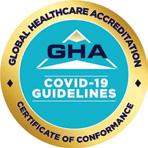

A place where compassionate people are nurtured and gathered to pay it forward to other people, to community, and to society
International Customer Services
Our International Service team are available especially for foreigners, we will ensure your utmost comfort when you are at Princ Hospital Suvarnabhumi Thailand. We understand the need to speak your language. Our multi-lingual interpreter team is ready to help overseas visitors and also expatriates overcoming the barriers of different languages and cultures while visiting the Princ Hospital Suvarnabhumi.
We speak your Languages (on site – 24 hours)
For more information, please contact Email: psuv_inter@princhealth.com


HEALTHCARE ASIA 51
Dr. Satit Viddayakorn Chairman

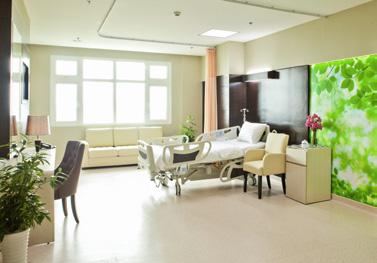


Phone: (8428) 6280 3333
Email: booking@cih.com.vn www.cih.com.vn

City International Hospital (CIH) located in Hoa Lam-Shangri-La High-Tech Healthcare Park in HCM City - Vietnam with a scale of 320 beds is one of six hospitals licensed by the Ministry of Health to provide medical examination and treatment for foreigners. Up to the present, the hospital has had 10 years of operation with 16 clinical and subclinical specialties such as: Obstetrics, Pediatrics, Cardiology, etc...
With a team of nationally known professors, quality doctors, well-trained nurses and technicians who have many years of experience in the field of specialized activities, as well as the motto “Putting Patients First” and “High-tech treatment at a reasonable cost”, the hospital is committed to providing international-class medical service quality, creating peace of mind, satisfaction and comfort for domestic and international patients.
52 HEALTHCARE ASIA
CITY INTERNATIONAL HOSPITAL
No. 3, 17A Street, Binh Tri Dong B Ward, Binh Tan Dist. Ho Chi Minh City - Vietnam

Femto Research Group Company ©: Pioneering Genome Infection Detection for Cancer and Alzheimer’s Disease

Genome infections significantly contribute to cancers and Alzheimer's Disease (AD), resulting in approximately 2 million new cancer cases and 1.5 million deaths annually worldwide. Cancers caused by infections exhibit higher mortality rates1, and the projected 75.63 million dementia cases, mainly AD, by 2030 emphasise the urgency of addressing this issue.2 Bacteria
References:
and fungi are identified as culprits, infiltrating the brain and co-infecting brain cells, leading to non-curable AD.3
The Femto Research Group presents a groundbreaking solution, the p53DIICBiome©, which revolutionises the identification and decoding of pathogenic microbiome infections in human DNA. DNA extraction from apoptotic cells in saliva, analysed with the Human Microbiome Project (HMP) database, identifies genome infections, including bacteria, parasites, helminths, fungi, and viruses.4
In managing cancer, eliminating infections is crucial, as advised by the American Cancer Society.5 With p53DIICBiome©, the Femto Research Group identifies cancer patients with medication resistance, targeting infection elimination to enhance treatment success, reduce complications, and extend life
1. https://www.iarc.fr/en/media-centre/iarcnews/pdf/TLO-INF-May2012-Eng.pdf
2. https://www.ohchr.org/sites/default/files/Documents/Issues/OlderPersons/Dementia/GAADReport.pdf
3. doi: 10.3389/fnagi.2018.00159
4. https://www.genome.gov/Pages/About/NACHGR/February2018AgendaDocuments/HMP_talk_Feb_Council_final_020618.pdf
5. www.cancer.org/cancer/acs-medical-content-and-news-staff.html
6. https://doi.org/10.1111/j.1532-5415.2004.52109.x
7. doi: 10.1016/j.bbr.2008.09.040
8. doi: 10.1128/AAC.02069-16
expectancy, especially in advanced cases. Likewise, for AD, p53DIICBiome© detects early-stage brain infections, enabling effective management with antibiotics, slowing the relentless progression of the disease.6,7,8
The power of prevention is the prime advantage of Femto Research Group's innovation. By early detection of infections, p53DIICBiome© empowers healthcare professionals to take proactive measures, significantly alleviating the burden of cancer and AD on individuals and society.
The reliability and recognition of p53DIICBiome© are evident through its consecutive six-year wins of the Healthcare Service Innovation of the Year Awards, 2018 to 2023. This accolade underscores the innovation's transformative impact on cancer treatment and AD prevention, signifying its potential to reshape the healthcare landscape.
EMAILS: kliupsornsuddhibhaga@gmail.com, MOBILES:+66659563733(0659563733); +66991852266(0991852266); +66816666134(0816666134) CONTACT
FEMTO LAB©: https://femtoresearchgroup.com

SERVICE INNOVATION OF THE YEAR - THAILAND
Femto Research Group Company at the Healthcare Asia Awards
• Ambulance & Emergency
• Bariatric Surgery
• Cardiology
• Cosmetic & Plastic Surgery
• Critical Care & Anesthesiology
• Nutrition & Dietetics
• Dermatology
• Dentistry
• ENT (Ears, Nose & Throat)
• Immunology
• Endocrinology
• General Surgery
• Medical Oncology
• Gastroenterology
• Internal Medicine
• Neonatology
• Nephrology & Dialysis
• Neurology
• Neuro Surgery
• Obstetrics & Gynecology
• Gynecology Oncology
• Ophthalmology
• Orthopedics
• Pain Management
• Pediatrics
• Pediatric Surgery
• Psychiatry
• Spine Surgery
• Interventional Radiology
• Aviation Medicine
• Pulmonology & Sleep Medicine
• Physiotherapy & Rehabilitation
• Family Medicine
• Urology
• Health at Home
• Laboratory • Radiology
• Pharmacy






54 HEALTHCARE ASIA
Leading Healthy Life Kumpulan Medic Iman Sdn Bhd 201301032521 (1062350-H) 25th floor, Menara KH, Jalan Sultan Ismail, 50250 Wilayah Persekutuan Kuala Lumpur, Malaysia Tel: +603 – 2779 0573 Fax: +603 – 2710 8206 Email: info.kmi@tdmberhad.com.my KMI Healthcare @Kmihealthcare KMI Healthcare www.kmihealthcare.com Envisioned to become the “TRUSTED HEALTHCARE PROVIDER OF CHOICE”, we are dedicated towards deeper understanding the needs of our patients in order to provide quality healthcare services within the living and working environments of the community. All our purpose-built hospitals offer single bedded rooms that ensure privacy and comfort to our patients and their guardians. Our promise to offer affordable but never compromised on healthcare quality blends well in every approach of our business. Service Delivery Innovation Initiative of the Year Malaysia Kumpulan Medic Iman Sdn Bhd (KMI Healthcare) Patient Care Initiative of the Year Malaysia Kumpulan Medic Iman Sdn Bhd (KMI Healthcare) Professional & Personalised Care

































































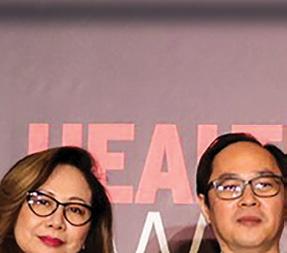
























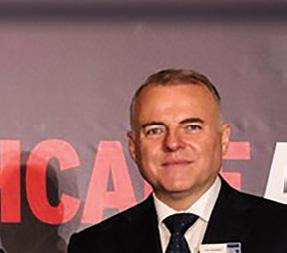
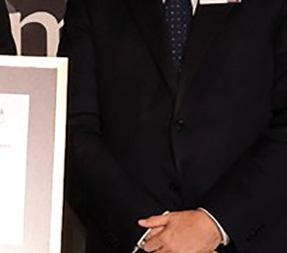














































































56 HEALTHCARE ASIA





















HHHHHHHH South East Asia Business Awards AW RDS 2023 YOUR FIRST REHABILITATION CENTRE CHOICE
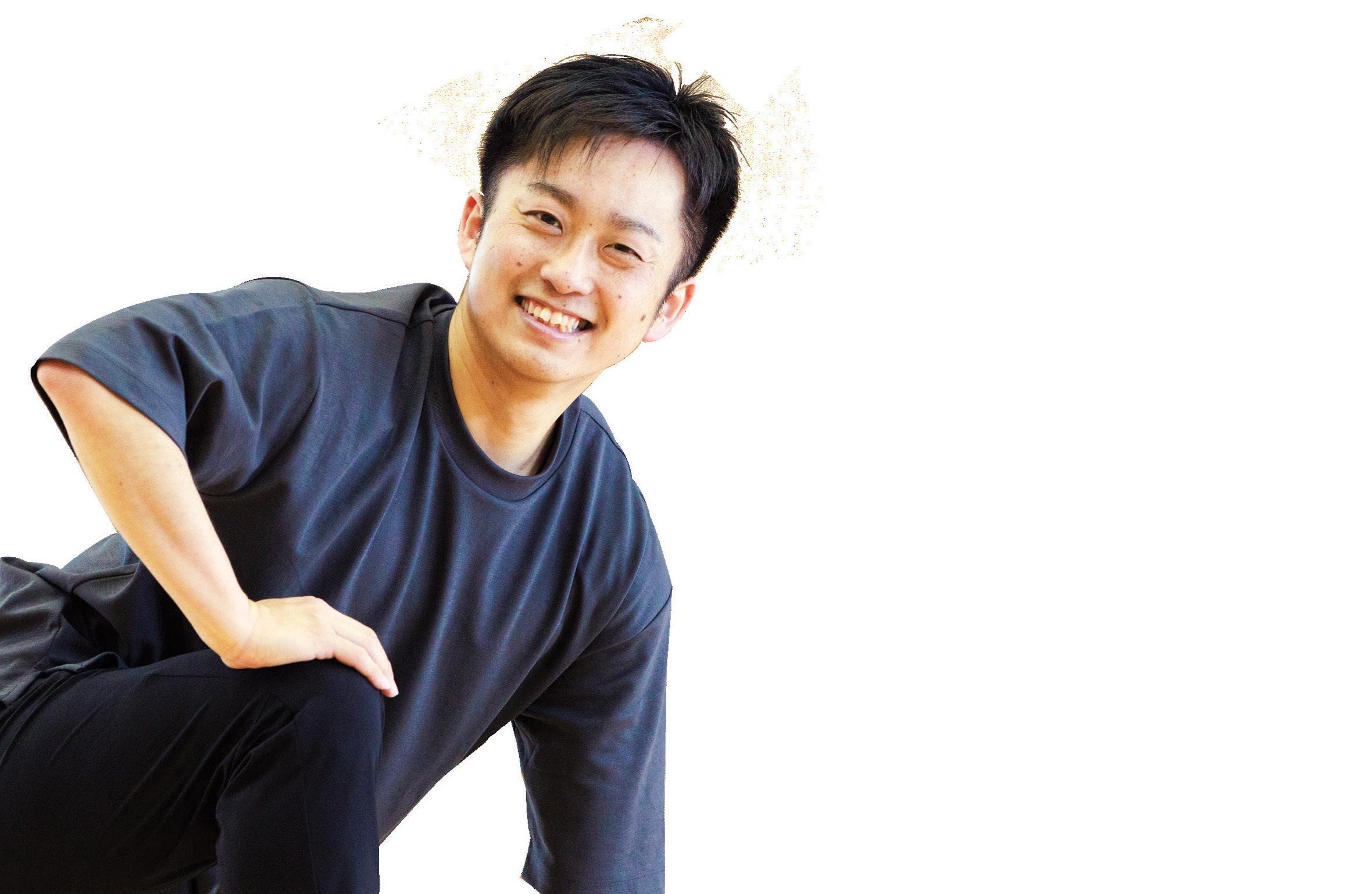



Eiichi, Japan Type 1, diagnosed in 1994 Eiichi. Unlimited. By managing his diabetes with a balanced diet, regular exercise and prescribed insulin injections, not much can slow Eiichi down. What’s your unlimited? Learn more at embecta.com BD-88409 Slow down myopia progression while providing all day glasses-free clear vision. AbilitiTM 1-Day is ~2x more e ective in controlling myopia* charge of myopia with AbilitiTM *JJV Data on file, 2023. E cacy of ACUVUE® Abiliti™ 1-Day Soft Therapeutic Lenses for Myopia Management: Comparative Claims vs Single Vision and Dual Focus Lenses. Based on axial elongation after 6 months of wear. SG1862 KEEP KIDS UNSTOPPABLE



PENTAX Medical INSPIRA™ Video Processor
The bridge for legacy endoscopes to next level image quality. The gateway to tomorrow’s cutting-edge technology in diagnosis and therapy.

Learn more
Endoscopy Product Innovation of the Year PENTAX Medical Singapore Pte Ltd Launch INSPIRA_Landscape_Asia-print-magazine_200x130mm_RZ4.indd 1 13.07.23 15:06 MKGI-4176EN-APAC Rev 1 (v1.1) Moving You Forward ™ FROM OUR VERY FIRST STEP, WE FEEL COMPELLED TO MOVE. It’s what drives us forward, to learn, to discover, to innovate and grow. At Zimmer Biomet it’s our mission to alleviate pain and improve the quality of life for people around the world. To keep patients moving through life without pain and healthcare providers moving and supported throughout their careers. Zimmer Biomet. Moving you forward. Find out more at www.zimmerbiomet.com This material is intended for health care professionals. All content herein is protected by copyright, trademarks and other intellectual property rights, as applicable, owned by or licensed to Zimmer Biomet or its affiliates unless otherwise indicated, and must not be redistributed, duplicated or disclosed, in whole or in part, without the express written consent of Zimmer Biomet. Visit www.zimmerbiomet.com for additional product information. ©2021, 2022 Zimmer Biomet 3633.1-APAC-en-Issue Date-2022-09
at inspira.pentaxmedical.com
Life-transforming technologies


Engineering the extr ao rd inar y ©2021 Medtronic Medtronic, Medtronic logo, and Engineering the extraordinary are trademarks of Medtronic All other brands are trademarks of a Medtronic company UC202206927 EN
c e l e r a ti n g m e dical inno v a t ion th roug h a p rof o u n d u nd erst andin g o f t h e h uman bod y.
Ac
ASHISH MAHAJAN OPINION
Harnessing the potential of cell and gene therapies in Asia Pacific
Amulti-billion-dollar cell and gene therapy (CGT) revolution is currently underway. By altering a patient’s biological core – their DNA – CGTs look set to transform a myriad of therapeutic areas once thought to be incurable. These will not only transform the way we treat intractable diseases – it will also transform the entire pharmaceutical ecosystem.
Within Asia Pacific, we are already witnessing growing pipelines of CGT products and other innovative solutions lined up for commercial launch. Unlike conventional “one-size-fits-all” biopharma products, CGTs are designed to serve a “market of one”. The supply chain is built around a single patient, and each dose of the drug product is manufactured for a specific individual.
This then means that current processes deployed for conventional products cannot be easily adapted for use. A new approach is needed for designing CGT operating models – one centred around complex, patient-centric journeys, and a holistic understanding of the stakeholder ecosystem.
Four imperatives for commercial delivery
1. Shift from a product-centric to a service-centric mindset
Given that CGT products are manufactured for individual patients, there is a need to ensure tight coordination between all ecosystem players involved, including but not limited to pharmaceutical companies, healthcare professionals, and regulators. To this end, a high-touch, high-visibility, and closed-loop service-centric delivery model – one with clearly defined end-to-end touchpoints, handovers, and stakeholders – is essential.
This represents a significant shift from the traditional product-centric supply chain model, where manufacturers have separate commercial and medical functions and do not coordinate for individual patients. Today, many CGT players still struggle to commit investments and reshape their mindsets to align with such a delivery model.
2. Deploy patient-centric digital ecosystems
Collaboration of an entire ecosystem of players is essential to effective patient and product journeys in the context of CGTs. Bringing this concept to fruition, however, will require pharmaceutical companies to invest in the deployment of patient-centric ecosystems.
These platforms should be capable of providing product assurance, ensuring alignment in key hand-offs, and enabling the establishment and centralisation of order transparency. However, it is likely that there would not be a single solution capable of managing all end-toend CGT processes from ordering to scheduling, labelling, billing, and manufacturing.
Rather, a mix of applications – manufacturing execution system (MES), customer relationship management (CRM), treatment portals, and enterprise resource planning (ERP) systems – must be integrated to facilitate CGT lifecycle functions.
3. Collect and manage mission-critical data
Conventional drug products follow predictable production and distribution schedules, requiring limited involvement from healthcare
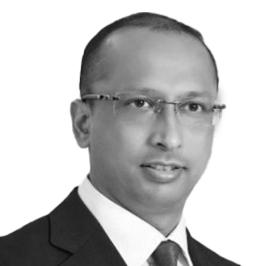 ASHISH MAHAJAN Consulting Executive Director Deloitte Singapore
ASHISH MAHAJAN Consulting Executive Director Deloitte Singapore
providers and patients. However, in CGTs where the patient is core to the manufacturing and delivery of the product, the entire ecosystem must rely heavily on the exchange and use of patient-specific data.
This paradigm shift alters not only the type of data that players must deal with, but also the fundamental nature of their workflows throughout the patient lifecycle. As any disintegration in the data architecture is likely to result in the lack of a single source of truth – and consequently, inconsistent audit trails and ineffective decision-making – a streamlining of existing data collection and management processes should be of the utmost priority.
While some players may have found that they have been able to function thus far with unclear data architectures, the reality is that CGTs will require them to deal with such an unprecedented volume and variability of data that their existing systems can easily be overwhelmed.
4. Embrace the unexpected
The stakes are high for CGT delivery: the failure to deliver a product on time could mean depriving a patient of their only remaining viable treatment option. The primary challenge, however, is that the product fulfilment process is highly variable and volatile.
Apart from supply chain disruptions, an order could be delayed for various extraneous reasons, such as weather conditions and flight cancellations. Based on our experience, the probability of having to reschedule an apheresis is almost 40 percent at cumulative order levels – a statistic that clearly underscores the importance for pharmaceutical companies to consider the long-term resiliency of their CGT operations.
As a start, CGT players should focus on building flexibility into their vein-to-vein value chains, and planning for high-impact, highprobability contingency scenarios in collaboration with ecosystem stakeholders. Continual monitoring, as well as flexible and rapid decision-making processes, will also be key to ensuring that value chains remain robust in the face of evolving circumstances
Looking ahead
Ultimately, to deliver on the unparalleled potential of CGTs, an equally unparalleled commercial delivery model is required. From manufacturing to infusion and long-term follow-up, the need to ensure the end-to-end traceability of viable cells demands an unprecedented rethink of operating models.
While each CGT product will likely require an idiosyncratic path to commercial readiness, the success of its operating model will hinge in large part on the pharmaceutical company’s ability to tolerate risk and ambiguity and develop and implement a strong digital core –one that is capable of facilitating seamless collaboration across an entire ecosystem of players and involving patients throughout the journey.
More importantly, as CGT players look towards a horizon of new unknowns, we believe that it will be a gritty willingness to “roll up one’s sleeves” and commit to prompt, data-backed decision-making, that will make or break their ability to overcome inevitable setbacks on the journey to long-term success.
62 HEALTHCARE ASIA


Reach your prospects and leverage your brand DISCUSS YOUR NEXT DIGITAL EVENT WITH US Webinars and virtual roundtables are taking the HCA event experience to a whole new level and continually forging connections between Asia’s healthcare leaders. Produced to address the most pertinent industry issues while letting you influence the discussion to leverage your products as a suitable solution for these pain points. For details, contact: Shairah Lambat +65 3105 1200 ext. 402 shairah@charltonmediamail.com
JOHN YOUNG
Democratising healthcare in SEA: From traditional hospitals to digital healthcare providers
Healthcare innovation in Southeast Asia is accelerating at a phenomenal rate, with total healthcare spending expected to increase to US$740b by 2025 from US$425b in 2021.
In particular, strong growth in telehealth, diagnostics, remote patient monitoring, and analytics has attracted investments in digital healthcare worth US$10.7b - a 62% increase from 2020, placing Asia second only to the US.
Healthcare systems in SEA have already begun to embrace a hybrid model by combining telehealth and in-person treatment to provide a better experience for patients and staff while achieving the same clinical outcomes.
However, with SEA being a melting pot of cultures, this rapid growth and digitalization in the healthcare industry varies from country to country. Majority of health tech companies in the region are headquartered in Singapore, with the next significant base in Indonesia. Whilst Singapore leads the way with a more developed set-up, other markets with evolving infrastructure still have room to grow.
Clearly, the bigger question for the region’s healthcare industry today is how to democratise progress in technology adoption so that more markets can tap on the growth of health tech.
Synergies between traditional hospitals and health tech start-ups. One way to speed up the transformation of hospitals and healthcare providers who have yet to adopt new technologies is through partnering and incubating health tech start-ups. It is undeniable that the pandemicfuelled acceleration in digital adoption across various aspects of life has increased the trust and preference that consumers have in health tech.
For both consumers and physicians, telemedicine usage has almost doubled with increased trust in healthcare technology companies after the pandemic. As a result, hospitals are no longer viewed as the de facto healthcare provider, with teleconsulting and other delivery models that cost less with greater convenience promised to consumers disrupting behaviour.
However, consumers in other parts of SEA such as Singapore, Malaysia, and the Philippines still trust traditional primary care providers approximately 30% more than technology companies to coordinate and manage care.
Instead of seeing these two options as competing ones, traditional hospitals and healthcare providers can continue to do the great work they do while innovating to provide an even greater patient experience and diversified offerings by partnering with health tech start-ups. Already, healthcare systems and personnel have picked up pace in adopting innovative technologies. The use of remote patient monitoring and augmented reality tools increased from 60% to 70%, and the number of physicians leveraging AI or machine learning more than doubled. However, there’s a limit to how far traditional hospitals can digitally transform without partnerships and external expert opinions. A natural next step is working with health tech start-ups to accelerate the process of adopting digital technologies and meeting current needs of their consumers.
 JOHN YOUNG Principal Heidrick & Struggles Singapore
JOHN YOUNG Principal Heidrick & Struggles Singapore
The goal is for traditional healthcare systems to develop into or become part of health ecosystems that integrate both digital and physical health services, and comprise various players in the industry including brick-and-mortar providers, health tech startups, and IT vendors.
Growing importance of the Chief Digital Officer
Besides working with health tech start-ups, finding the right Chief Digital Officer (CDO) and building a team with relevant skill sets is also a key factor to democratise the healthcare industry within the region.
In today’s current state of healthcare, customer expectations on personalization, convenience, and speed have increased drastically. This requires a more complex engagement strategy across channels, bringing data and analytics to the fore.
Finding a single, all-encompassing digital leader can be challenging. Digital not only refers to technology, but also encompasses new experiences, ways of working, and business models. As a result, while CDOs often possess tech expertise and have served in a variety of IT positions, their experience often goes further to include user experience design, innovation, entrepreneurship, and direct engagement with business units.
Unlike other tech executives, an effective CDO must thrive at the intersection of tech and business, with the necessary knowledge and insights to design and lead digital transformations.
The roadmap ahead for healthcare in SEA
Building strong and sustainable healthcare ecosystems through partnerships and providing a conducive environment for health tech start-ups to thrive is the way forward as the industry banks on digitisation to meet growing healthcare needs and challenges.
Finding the right CDO and clearly defining the scope of work is crucial in integrating new technologies into existing business models and leading the digital transformation.
Finally, as a growing industry amidst global tech talent shortage, it is also imperative that the health tech sector prioritises creating organisations where people want to stay for the long term. Besides maintaining inclusion and engagement, increased opportunities, challenges, learning, feedback, and career coaching are also important aspects of building meaning and commitment over time, especially in a purpose-driven industry like healthcare.
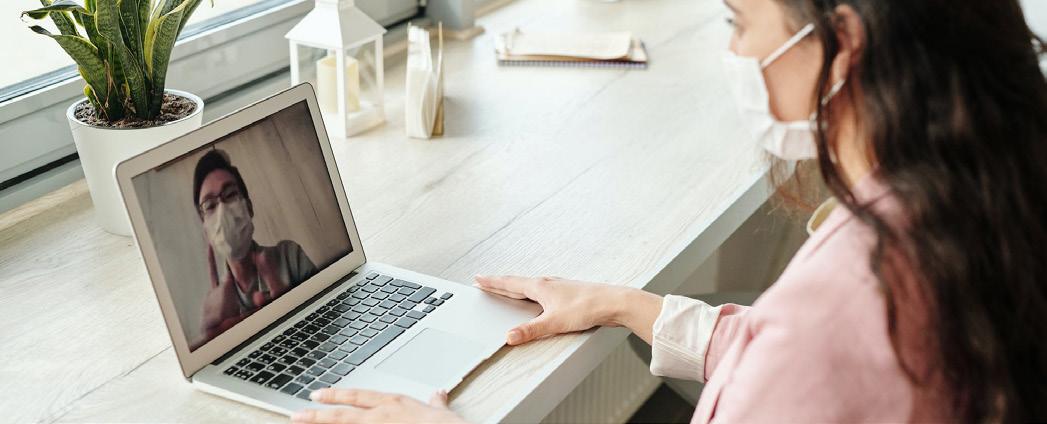
64 HEALTHCARE ASIA
OPINION



DONE IN ONE DON Reduced environmental impact Easy perforation detection Ansell, ® and ™ are trademarks owned by Ansell Limited or one of its affiliates. © 2023 Ansell Limited. All Rights Reserved. For more information, visit ansell.com Two gloves in one A WORLD FIRST










 Tim Charlton
Tim Charlton














 Eric Dulaurans
Growth Digital LeaderIntercontinental, GE HealthCare
Eric Dulaurans
Growth Digital LeaderIntercontinental, GE HealthCare




































































































































































































































































































































































































 ASHISH MAHAJAN Consulting Executive Director Deloitte Singapore
ASHISH MAHAJAN Consulting Executive Director Deloitte Singapore


 JOHN YOUNG Principal Heidrick & Struggles Singapore
JOHN YOUNG Principal Heidrick & Struggles Singapore



